Junglim Architecture has played a pivotal role in the development of Korean architectural culture, leading modern Korean architecture for half a century.
1960–1970s
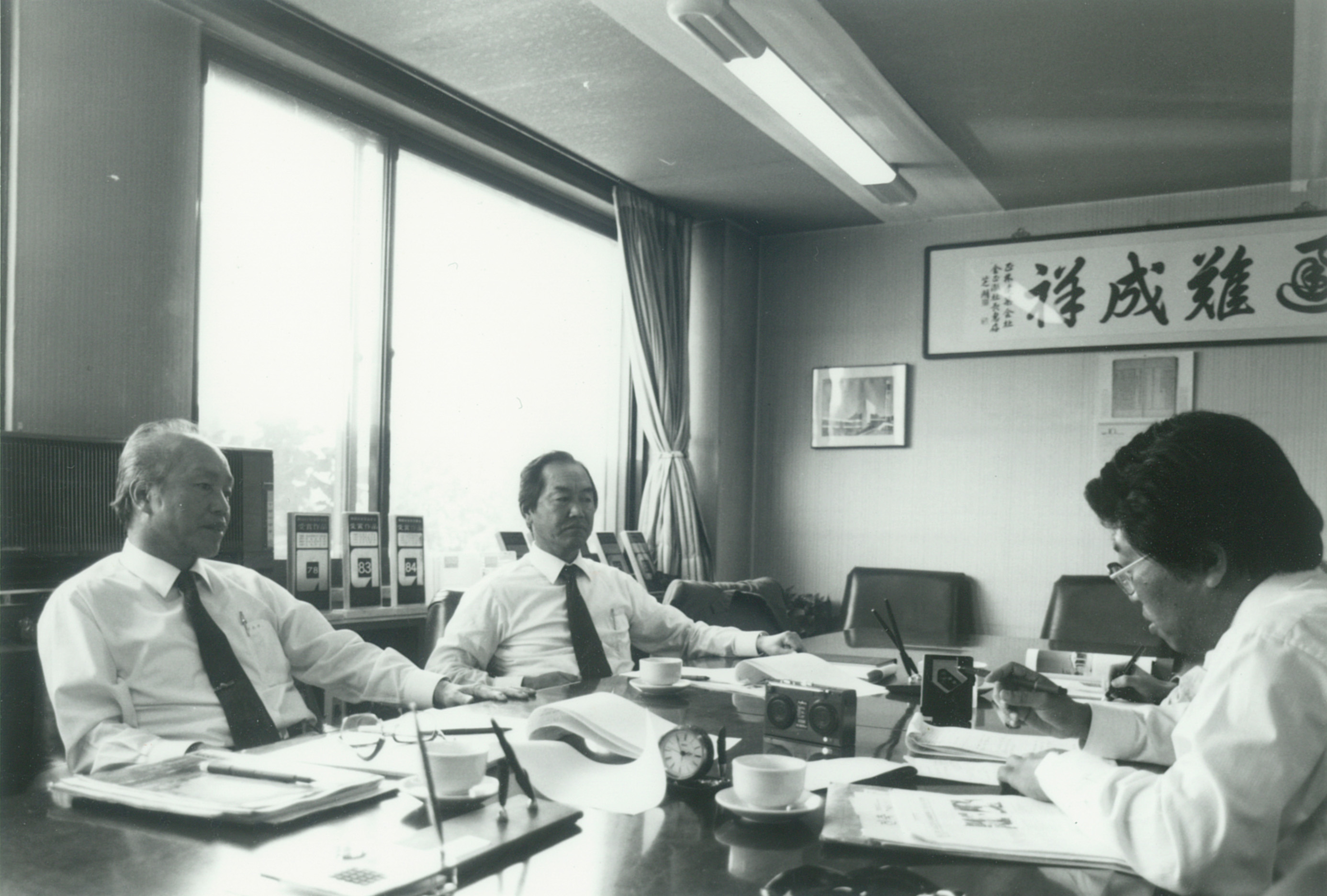
June 1967: Founding Junglim Architecture Research Institute
Co-founded by Honorary Chairmen Kim Jung-chul and Kim Jung-sik on June 17, 1967, Junglim Architecture started as the “Junglim Architecture Research Institute” in a single-story tile-roofed house in Euljiro with four employees, quickly expanding to over 30 through successive project wins.
The founding principles of Junglim Architecture Research Institute
First, to contribute to national development and environmental improvement through future-oriented creative activities that meet the demands of present-day society.
Second, to achieve technological innovation and deliver perfect total design through organized and comprehensive creative efforts.
Third, to explore technology development and accumulation to internationalize the firm’s technical capabilities and enhance national prestige, as well as save and earn foreign currency.
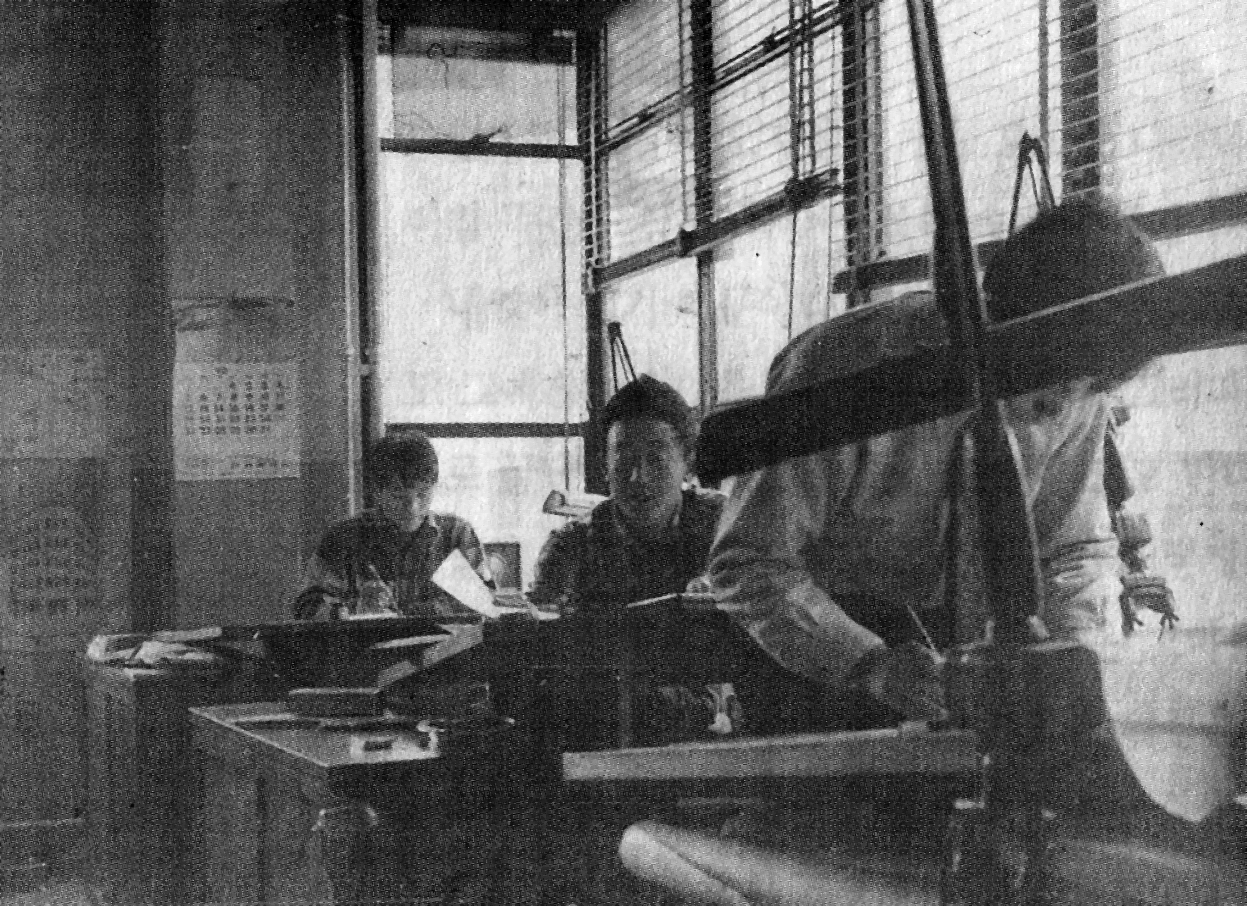
Founders Kim Jungchul and Kim Jungsik
Born in Pyongyang in 1932, Kim Jungchul graduated from the Department of Architectural Engineering at Seoul National University and worked at Jonghap Architects & Engineers. After working at the technical office of the International Cooperation Administration (ICA), which was the housing project agency of Korea Development Bank, he gained hands-on experience in architectural practice at the Bank of Korea’s construction department. Born in Pyongyang in 1935, Kim Jungsik graduated from the Department of Architectural Engineering at Seoul National University and developed his skills at Chungju Fertilizer and Jinhae Fertilizer. He obtained his architect’s license in 1966. The two founded Junglim Architecture Research Institute in 1967.
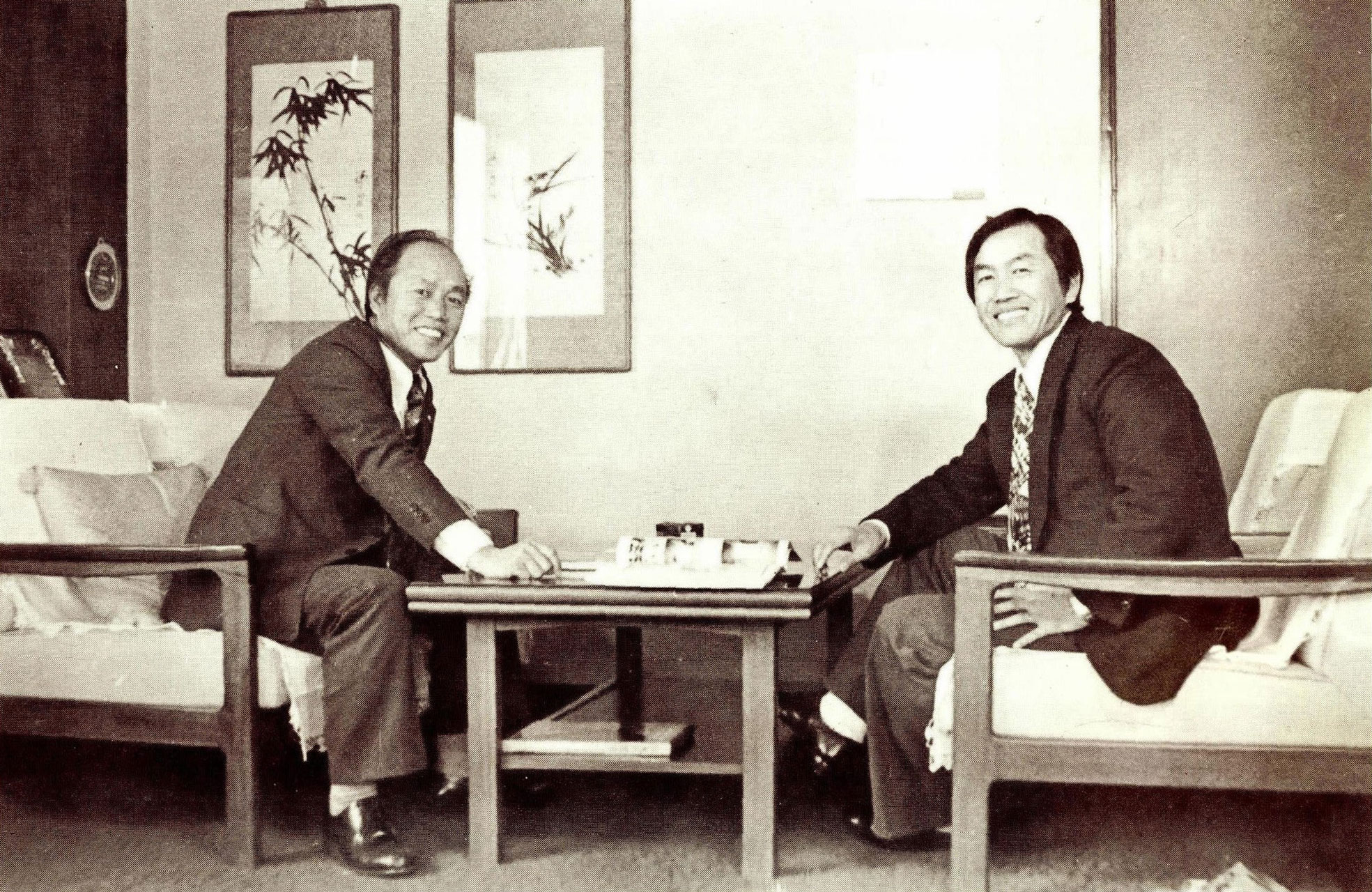
February 1970: Relocated to Samok Building in Bukchang-dong, Jung-gu
After moving to the Samok Building in Bukchang-dong, Junglim Architecture Research Institute carried out major projects such as the Seoul National University Gwanak Campus Main Building (1973), the Korea Exchange Bank Headquarters (design competition winner, 1973), and the Samyang Corporation Headquarters (1974). Keenly aware of the necessity for designing at an organizational scale after winning the Korea Exchange Bank Headquarters design competition, the firm laid the foundation for advancing technical expertise through collaboration with international architects.
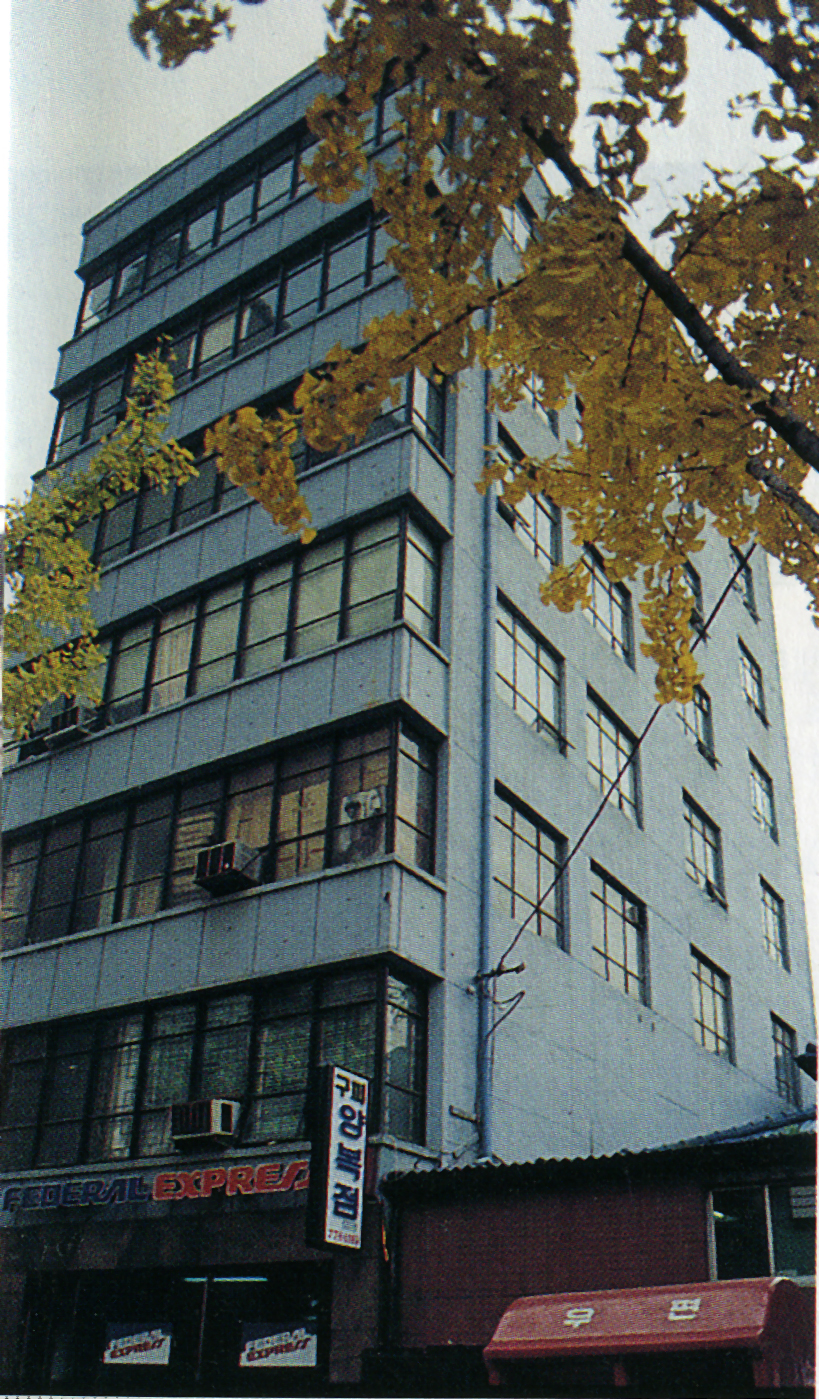
1971: Renamed as Junglim Architecture
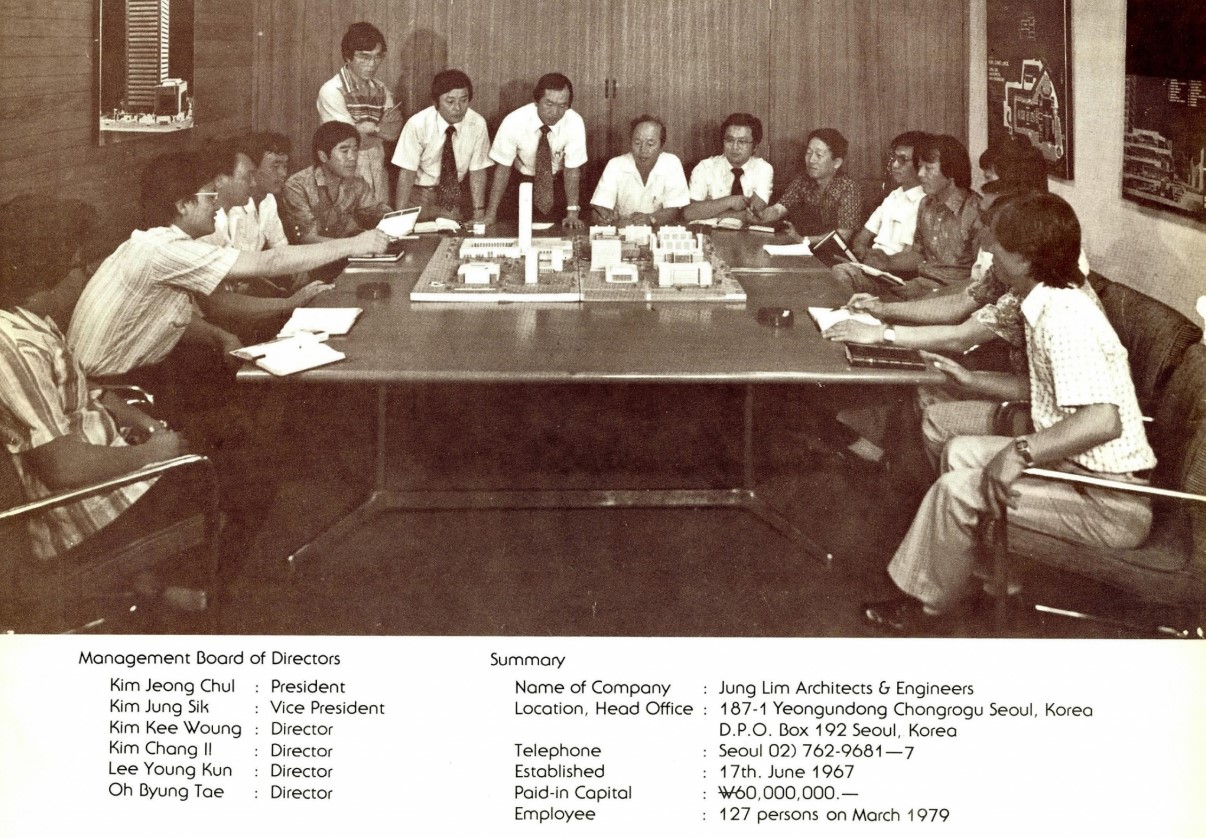
1973: Winning the Korea Exchange Bank Headquarters design competition
The Korea Exchange Bank Headquarters design competition in 1973 was a landmark project that served as a stepping stone for the firm’s growth and is considered a major milestone not only in Junglim Architecture’s history but also in the history of modern Korean architecture. The new headquarters construction was a representative early urban redevelopment project in the 1970s, serving as a pilot for urban renewal and marking the beginning of bank headquarters architecture in Korea. The typology of separating high-rise office floors from low-rise banking halls became the model for domestic financial institutions’ buildings, and the facade composition pioneered by Korea Exchange Bank became the prototype for many of Junglim Architecture’s subsequent high-rise office designs. The Korea Exchange Bank Headquarters is regarded as a large-scale project that set a standard for bank headquarters, establishing Junglim Architecture’s position prominently in the Korean architectural scene.

October 1973: Registered as Junglim Architecture Co., Ltd.
Registered as a corporation, Junglim Architecture reorganized its structure to encompass experts across all fields of architecture. It established the infrastructure for total design, covering architectural, structural, mechanical, electrical, fire protection, landscape, and environmental designs.

December 1975: Relocated to the office building in Yeonggeon-dong, Jongno-gu
Eight years after its founding, Junglim Architecture built a new office building in Yeongeon-dong, Jongno-gu, marking the beginning of the Yeongeon-dong era. At that time, the firm was composed of 107 employees across six departments: Planning, Design, Services, Special Projects, Supervision, and General Affairs.
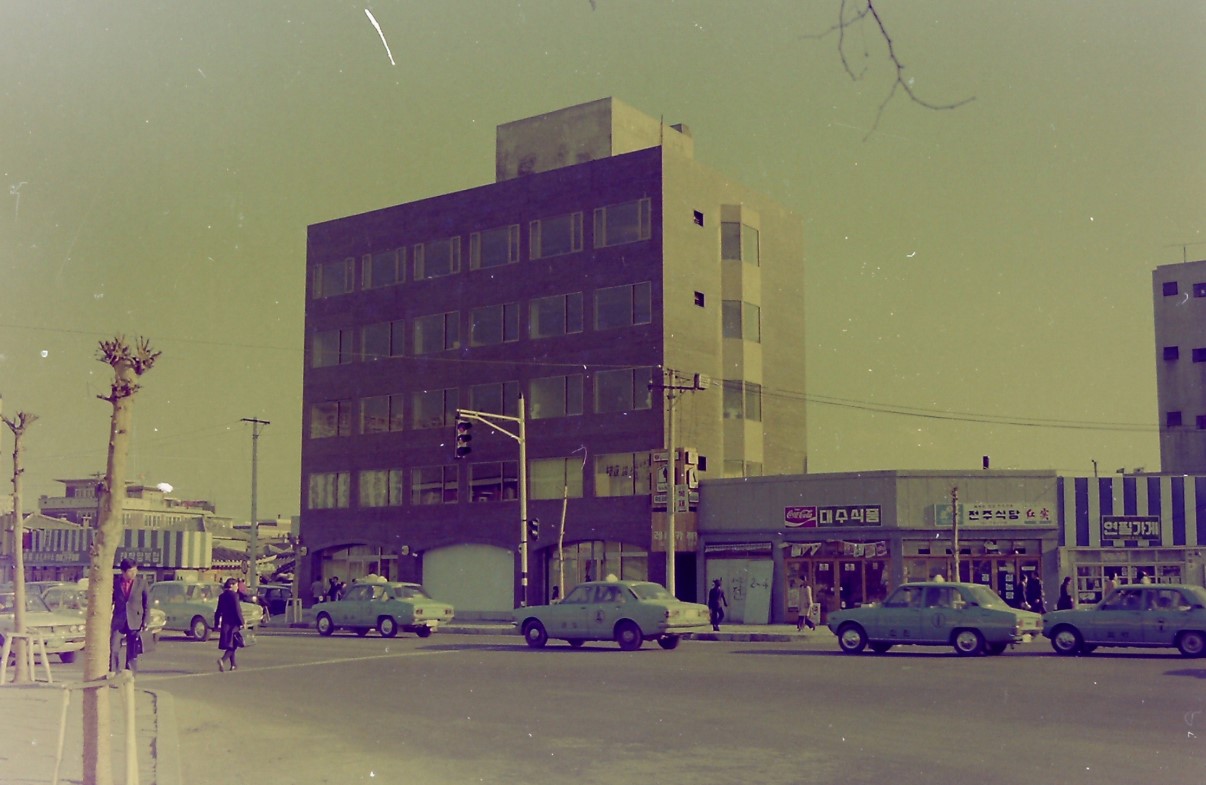
1980s

1981: Designing Ewha Womans University Library
Junglim Architecture undertook 22 projects for Ewha Womans University, starting with the general science building project in 1980 and including the central library, law school building, and the engineering building completed in 2005. The organization, composed of experts across various fields, and its outstanding work performance established the foundation for maintaining a partnership with Ewha Womans University for over 30 years.
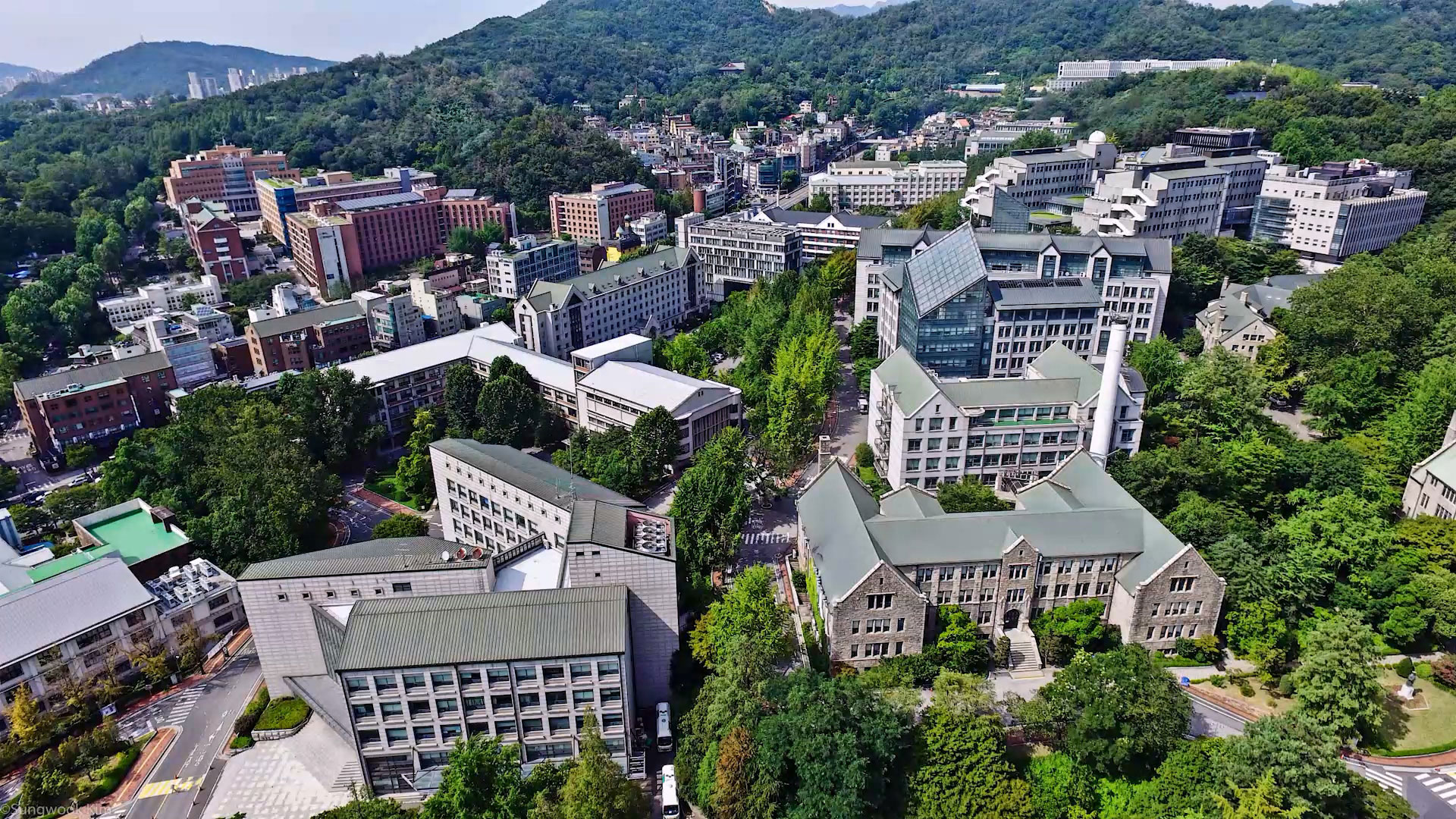
1985: Introducing the first CAD system in Korea
Keeping a close watch on global architectural trends by dispatching staff to American architectural firms for insight and resources, Junglim Architecture decided to bring the Sigma 3 CAD system from the U.S. In 1985, it paid $250,000 to become the first architectural firm in Korea to introduce a CAD system.
At the time, $250,000 was over 200 million Korean won, roughly equivalent to three months’ salary for all 130 employees at Junglim Architecture. In the early days of the system’s introduction, it was used primarily for creating perspective drawings for presentations. Unlike hand-drawn perspectives, computer-generated perspectives attracted the attention of clients.
Because the CAD system was not localized for the Korean language, its full utilization was difficult. Junglim devised its own methods, including drawing the entire set of precomposed Korean characters in the CAD system, enabling continued and productive use of the system.

1985: Completing the Korea World Trade Center
Located in the heart of Gangnam, Seoul, the Korea World Trade Center is a landmark symbolizing Korea’s globalization in the 1980s. Co-designed by Junglim Architecture and Japan’s Nikken Sekkei, it is a multi-functional complex carefully planned to simultaneously accommodate heterogeneous functions such as offices, hotels, international conferences, exhibitions, immigration control, and shopping, with a total floor area of 107,000 square meters. At the time, the focus was on hosting activities related to international trade and events linked to the 1988 Seoul Olympics, but the design also considered future socio-economic changes, planning a flexible and adaptable space accordingly.
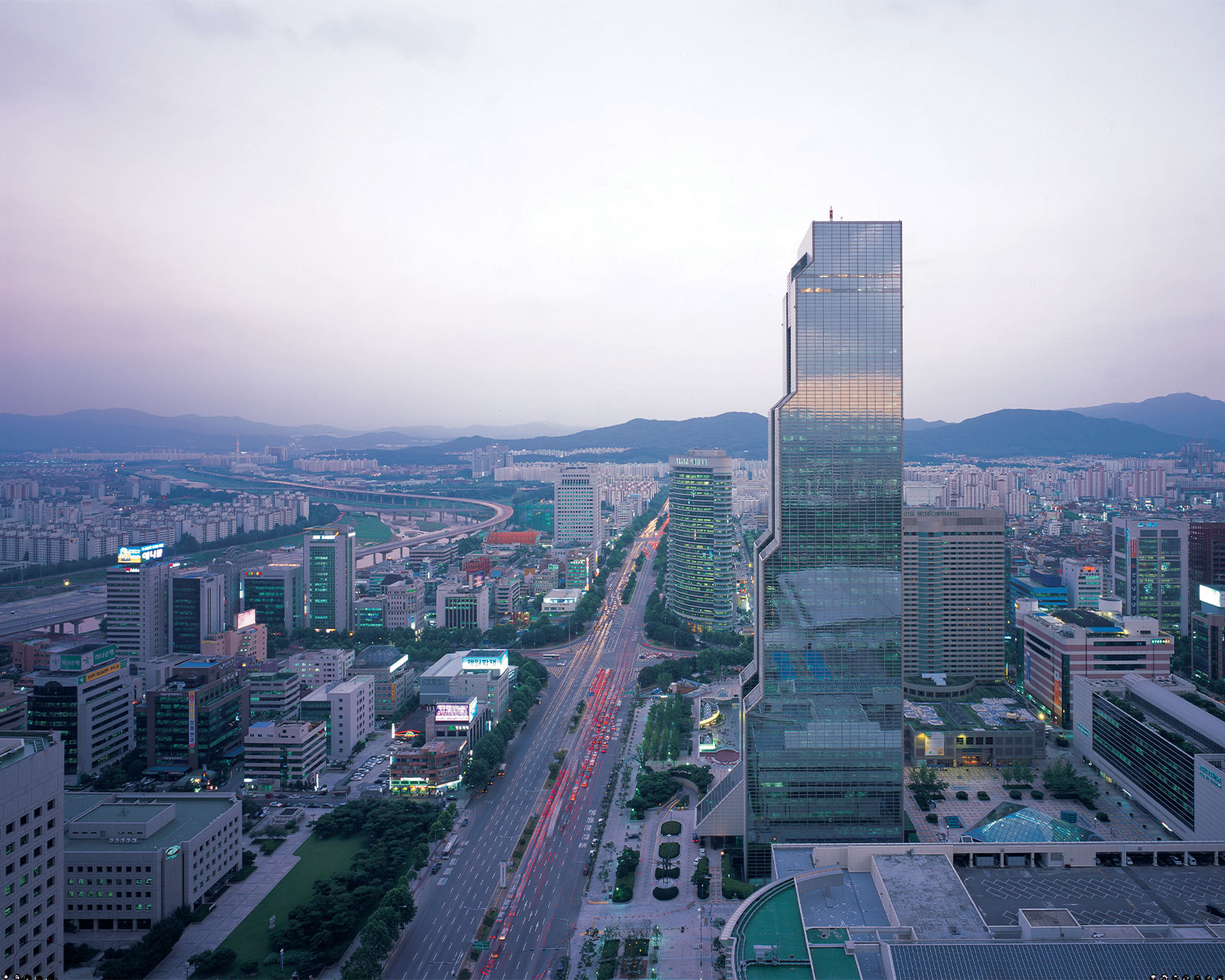
1987: Publishing Architectural Details, Korea’s first standard details
Junglim Architecture practices the spirit of “copyleft.” Rather than emphasizing intellectual property rights or “copyright,” it values sharing intellectual creations with everyone. Architectural Details (Junglim Details) is a publication of standard detail drawings used by the design division, marking the first standard detail publication in Korea’s architectural community. Architectural Details shared Junglim Architecture’s know-how for other design firms to utilize, contributing later to raising the overall level of Korean architectural technology.
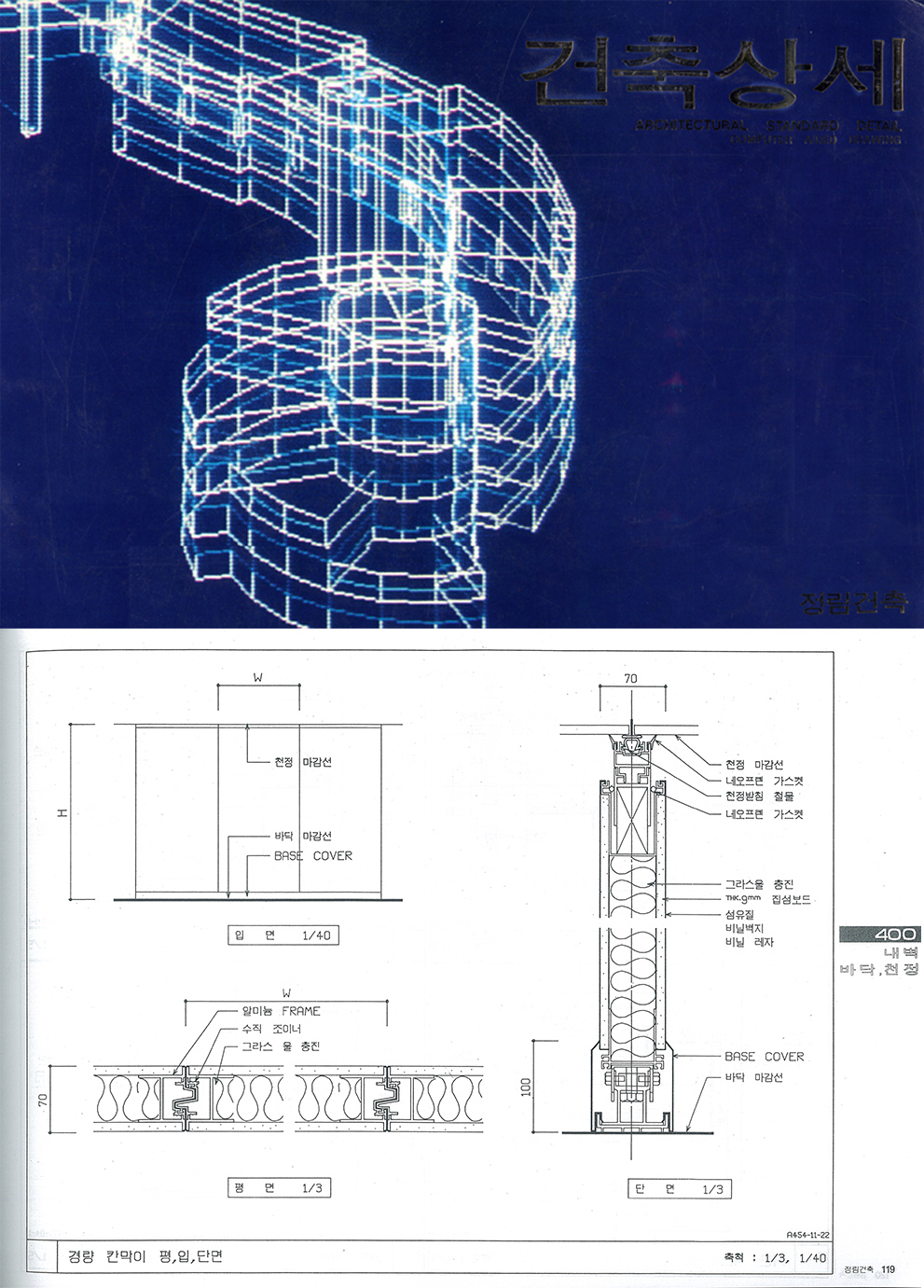
March 1987: Registered as a Specialized Technical Service Provider (Architectural Mechanical and Electrical Equipment)
Junglim Architecture pursued “total design,” a concept where experts from all fields related to architecture collaborate on coordinated and organized design. Total design embodies Junglim Architecture’s ideal of safe and perfect architecture that satisfies both clients and users. By organizing teams of experts from various fields within Junglim Architecture, the goal was to systematically review and coordinate the entire design from the early stages to produce a higher quality design proposal. The 1987 registration as a specialized technical service provider (mechanical and electrical equipment) was part of establishing a system to realize this total design approach.
November 1987: Publishing Junglim Architecture 1967 – 1987, Junglim Architecture monograph
To celebrate the 20th anniversary of Junglim Architecture, a monograph compiling its works over 20 years was published. This was the firm’s first monograph, featuring a total of 47 projects. In addition to information about the 47 projects, the book includes interviews with Honorary Chairmen Kim Jungchul and Kim Jungsik, writings by current and former executives, and contributions from notable figures in the architectural community.
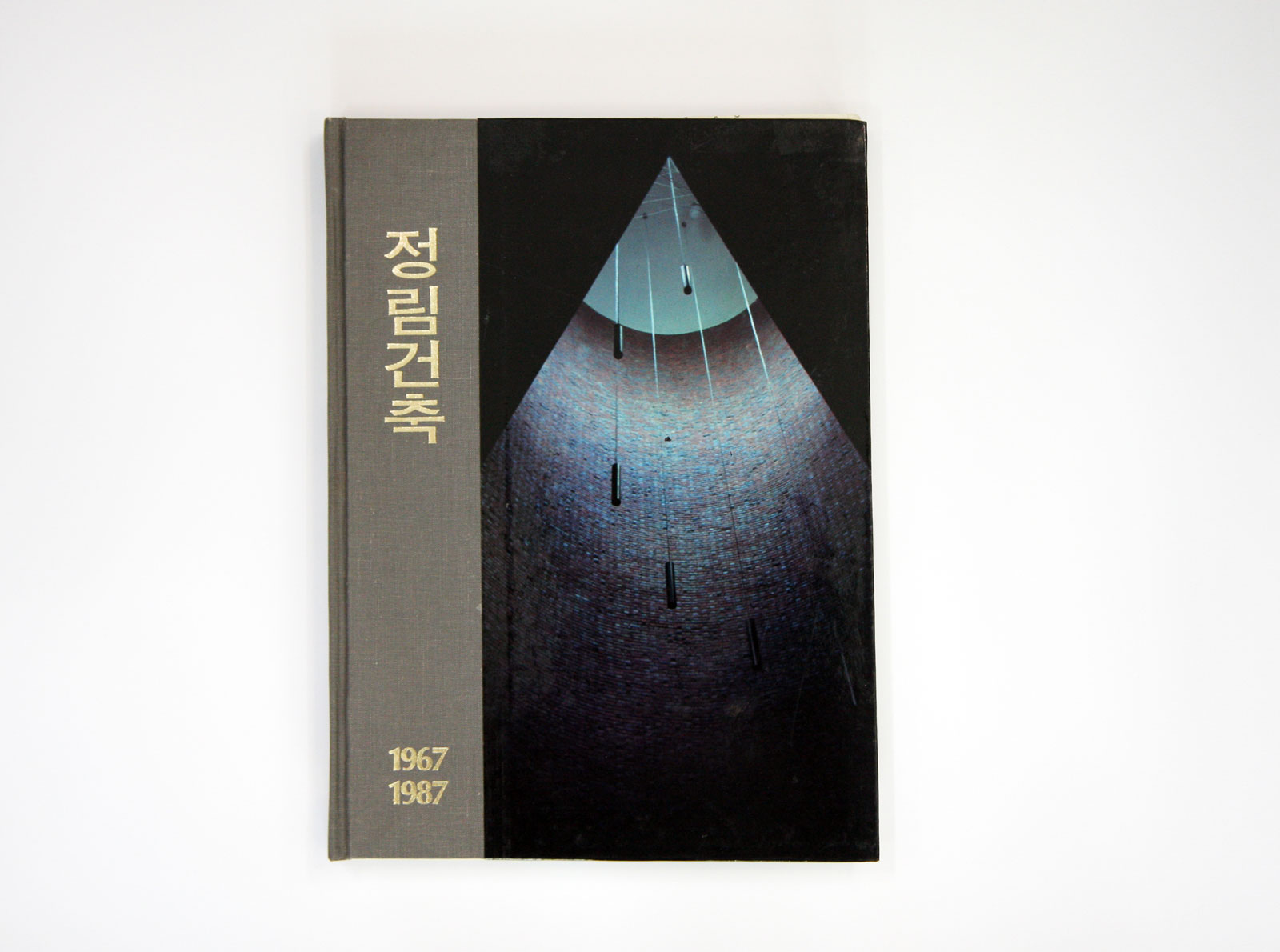
Junglim Architecture 1967-1987: 20th Anniversary Monograph
Year of publication: 1987
Publisher: Industrial Book Publishing Company
Author: Junglim Architecture Co., Ltd.
Editorial Committee: Kim Changil, Kwon Dowoong, Seo Kiseok, Choi Taeyong, Yang Jinhwang, Bang Cheolrin
Editors: Yang Jaein, Kim Youngho, Lee Haeuk, Oh Hyungki, Park WonseokPhotography: Kim Youngho, Jung Jungwoong, Lim Jeongeui
May 1989: Designing the main building and press center of the Blue House (Cheongwadae)
The trust and work capability Junglim Architecture built led to major national symbolic projects, notably the Blue House’s main building and press center (Chunchugwan). To express their identity as buildings representing the Korean government, the firm architecturally reinterpreted the unique elegance and beauty of Korea, creating profound spaces in harmony with the surrounding environment by considering the relationship between nature and architecture.
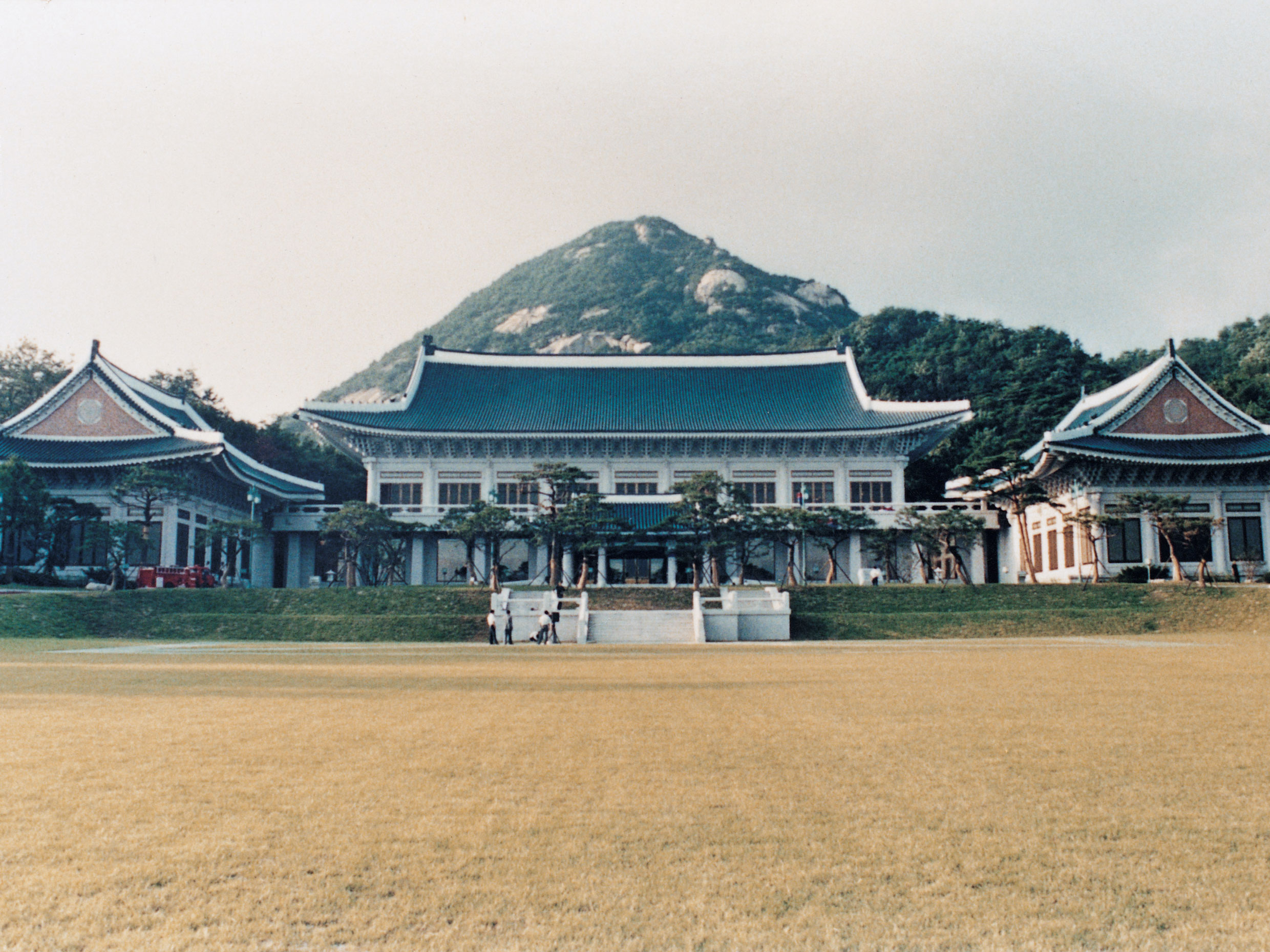
October 1989: Registered as a Specialized Construction Supervision Company
1990s
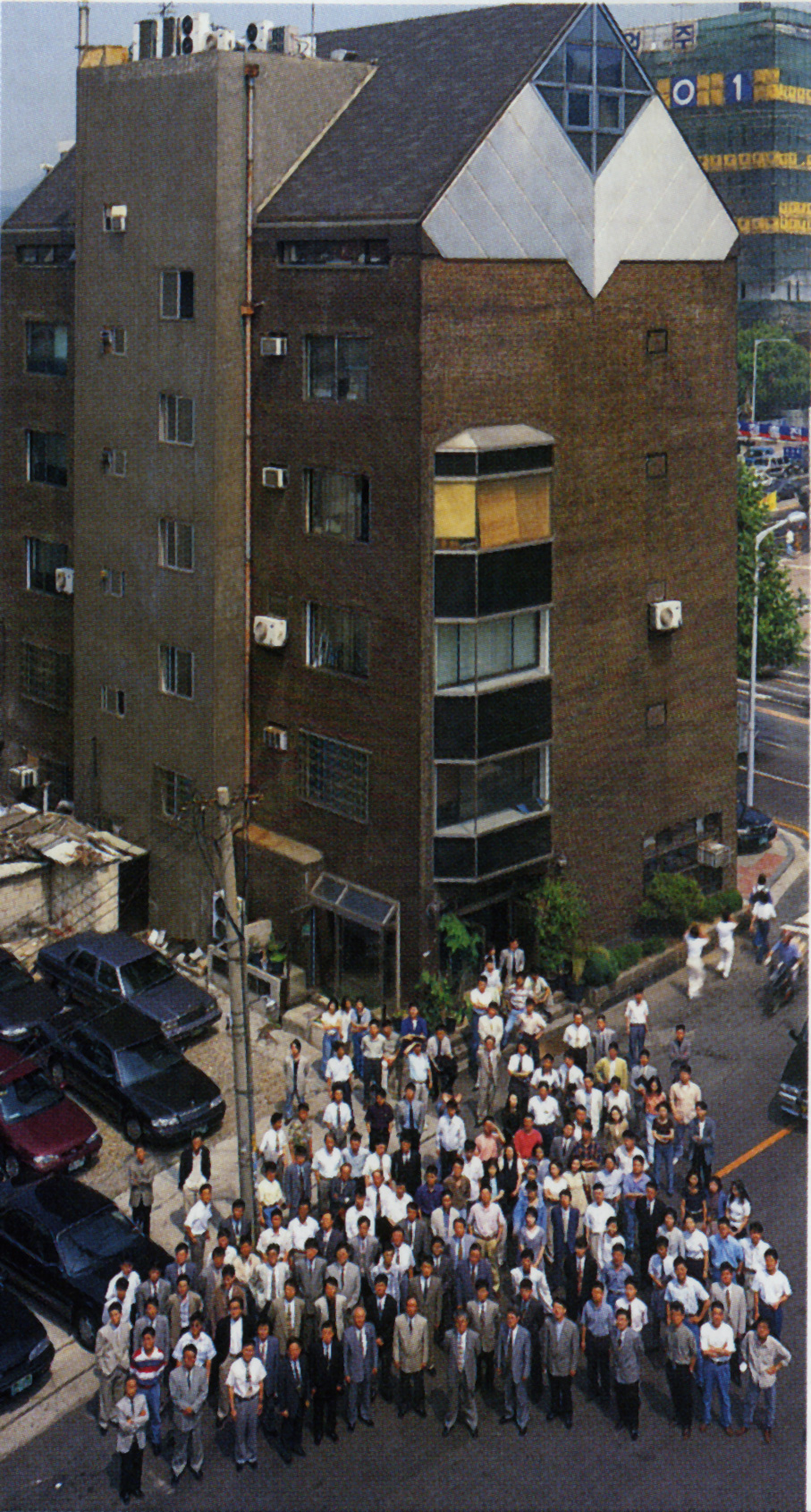
November 1992: Winning the international design competition for Incheon International Airport
In the international design competition for the Incheon Airport, which attracted participation from world-renowned architects, the winning design was praised as the piece that best showcased Korean-style design and identity. To undertake the project, a consortium with other domestic architectural firms was formed and registered as Korean Architects Collective International, Co. Ltd. in February 1993.
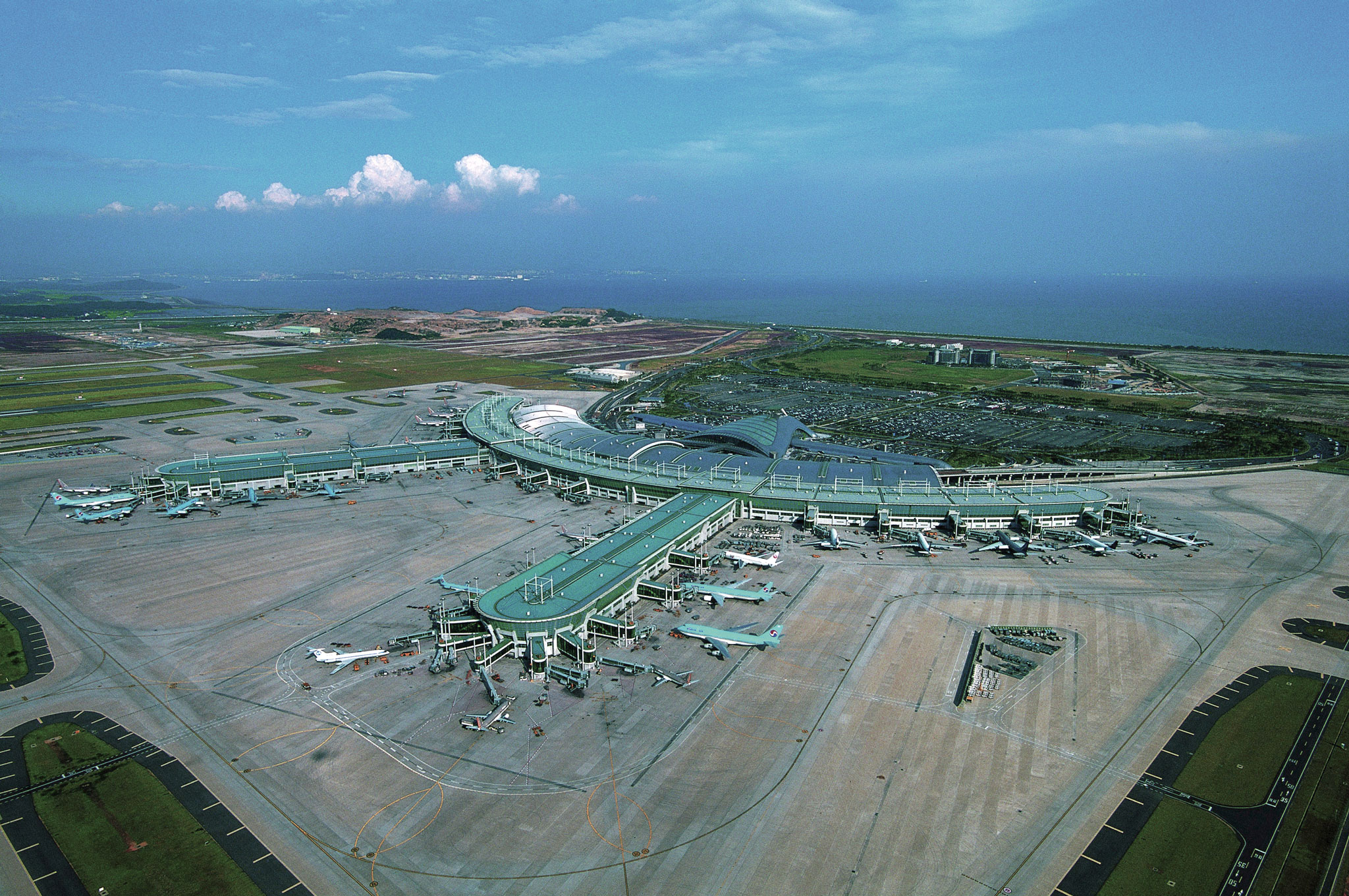
May 1993: Publishing the company newsletter Daecheongmaru
As the first domestic architectural office to publish a company newsletter, Daecheongmaru has played the role of a communication channel for employees as well as a window to the domestic architectural community’s news and discourse, fostering smooth communication within the company across various fields.

January 1994: Reporting as an Engineering Business Entity
February 1994: Registered as a Fire Protection System Design and Supervision Business
August 1995: the old Yeon-geon-dong headquarters demolition event
Junglim Architecture, which was using a six-story building completed in 1975, planned to tear down the existing building and build a new headquarters on the site to accommodate their growing staff and expanded business areas. Embracing this significance, the firm transformed the scheduled demolition into an artistic venue under the theme “DE+RE CONSTRUCTION,” collaborating with artists Lee Seungtaek, Kang Eunyeop, and Lee Sanghyun to carry out the demolition event. This caused a significant stir in both the architectural and art communities, especially receiving favorable responses because the initiative came from an architectural firm.
DE+RE CONSTRUCTION: The Demolition Trilogy by Lee Seungtaek, Kang Eunyeop, Lee Sanghyun
Period: August 12–20, 1995
Participating Artists: Lee Seungtaek, Kang Eunyeop, Lee Sanghyun
Curator: Kim Honghee
Project Planning: Junglim Architecture Co., Ltd.

October 1995: Winning the international design competition for the National Museum of Korea
The National Museum of Korea was the largest cultural facility project of its time in South Korea, and the first international design competition held under the official recognition of the International Union of Architects (UIA). Junglim Architecture won the competition, beating more than 300 domestic and international architectural firms, praised for “organizing complex functions well with clear circulation flow and effectively expressing the image of an important national public building.”
This was the first case where a large architectural firm independently won a major cultural facility competition, which had typically been dominated by atelier architects. The National Museum of Korea is evaluated as a work that modernly reinterprets Korea’s traditional worldview on nature and architectural spirit, showcasing the stature of Korea’s representative museum.
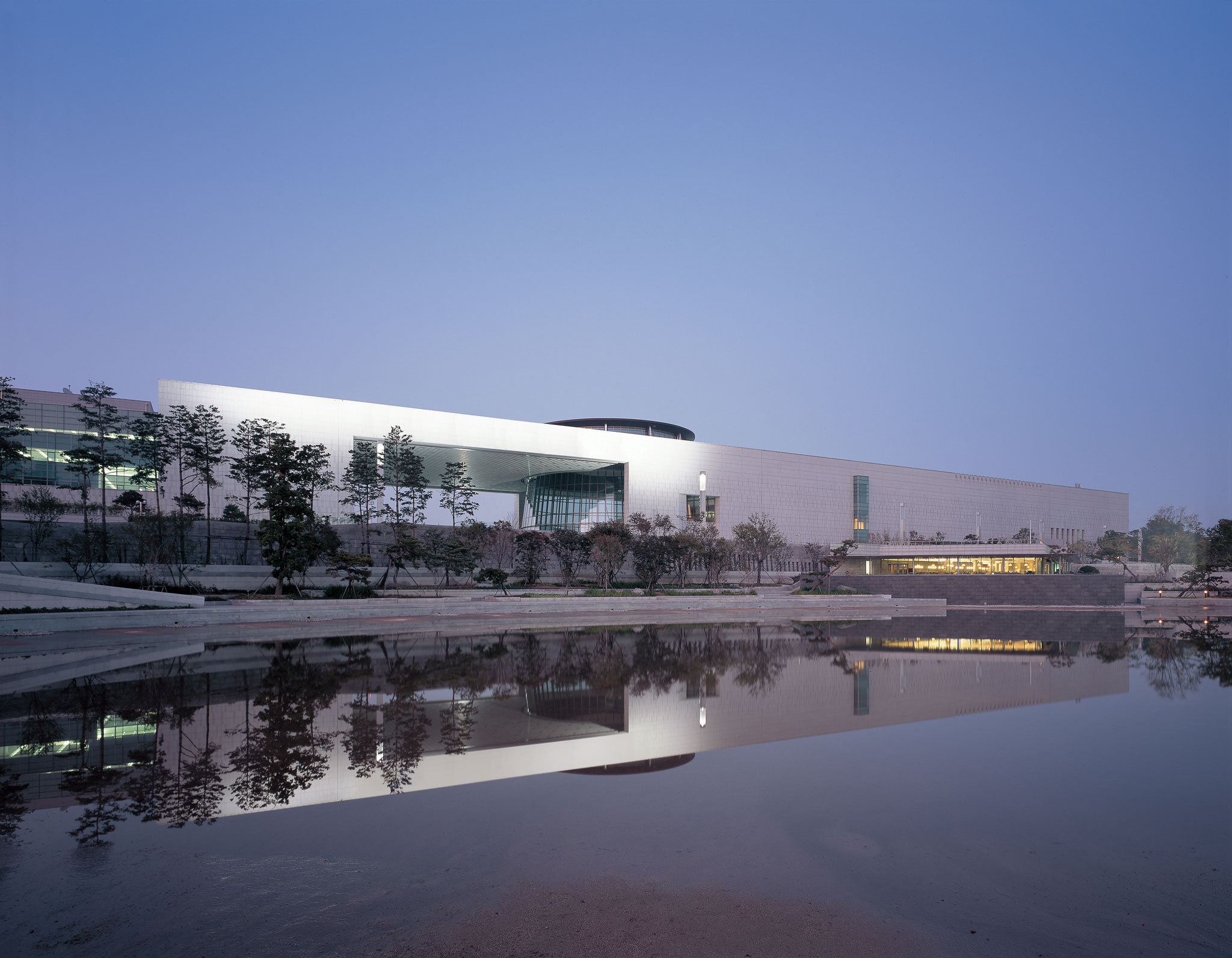
August 1998: Completing and moving into the new Yeongeon-dong headquarters
In August 1996, shortly before its 30th anniversary, Junglim Architecture decided to demolish the six-story building completed in 1975 and construct a new headquarters on the same site. Along with this, the firm embarked on developing a long-term development plan and creating a new corporate identity (CI) as part of its commitment to a new leap forward. Despite the difficulties of the 1997 financial crisis, Junglim Architecture completed and moved into the new Yeongeon-dong headquarters in August 1998. The building has since served as the firm’s headquarters for 23 years.
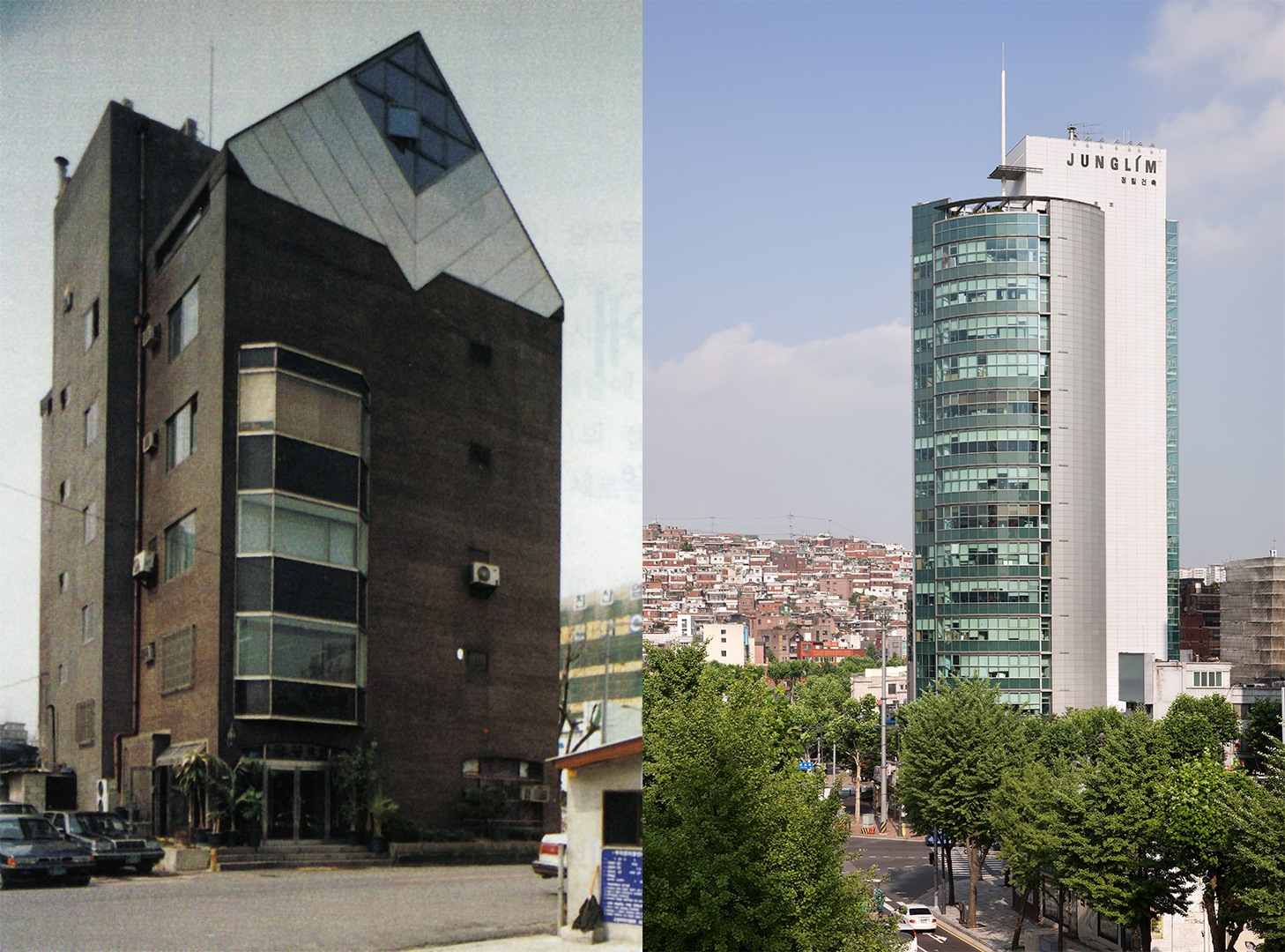
2000s
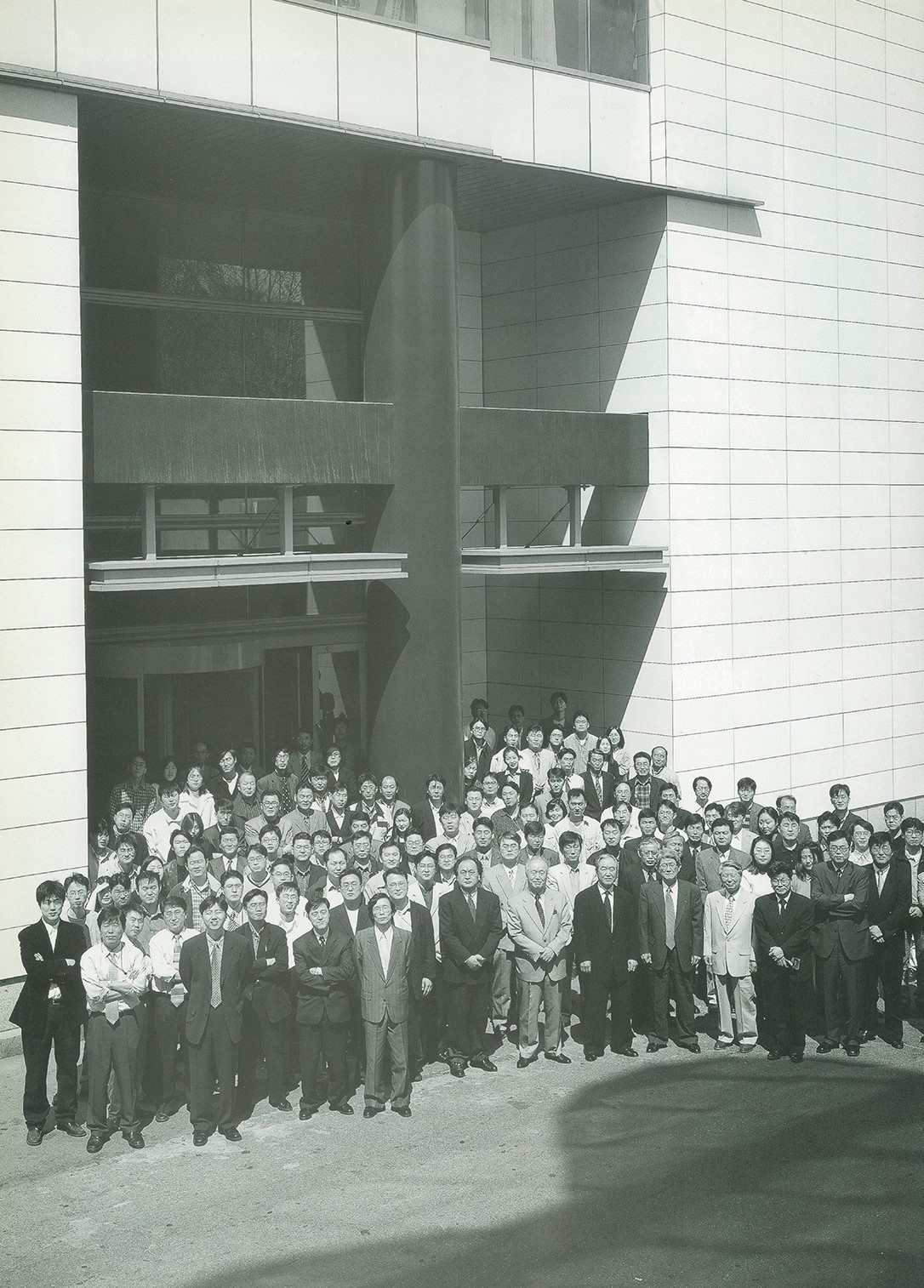
2000: Participating in Habitat for Humanity design volunteer work and volunteer service
Since 2000, Junglim Architecture has consistently participated in Habitat for Humanity volunteer activities, continuing its social contribution efforts that embody the company philosophy. Through design volunteer work and technical consulting using the expertise and skills of Junglim Architecture’s executives and staff — such as master planning, free design services, and drawing support — the firm practices its social responsibility in architecture.
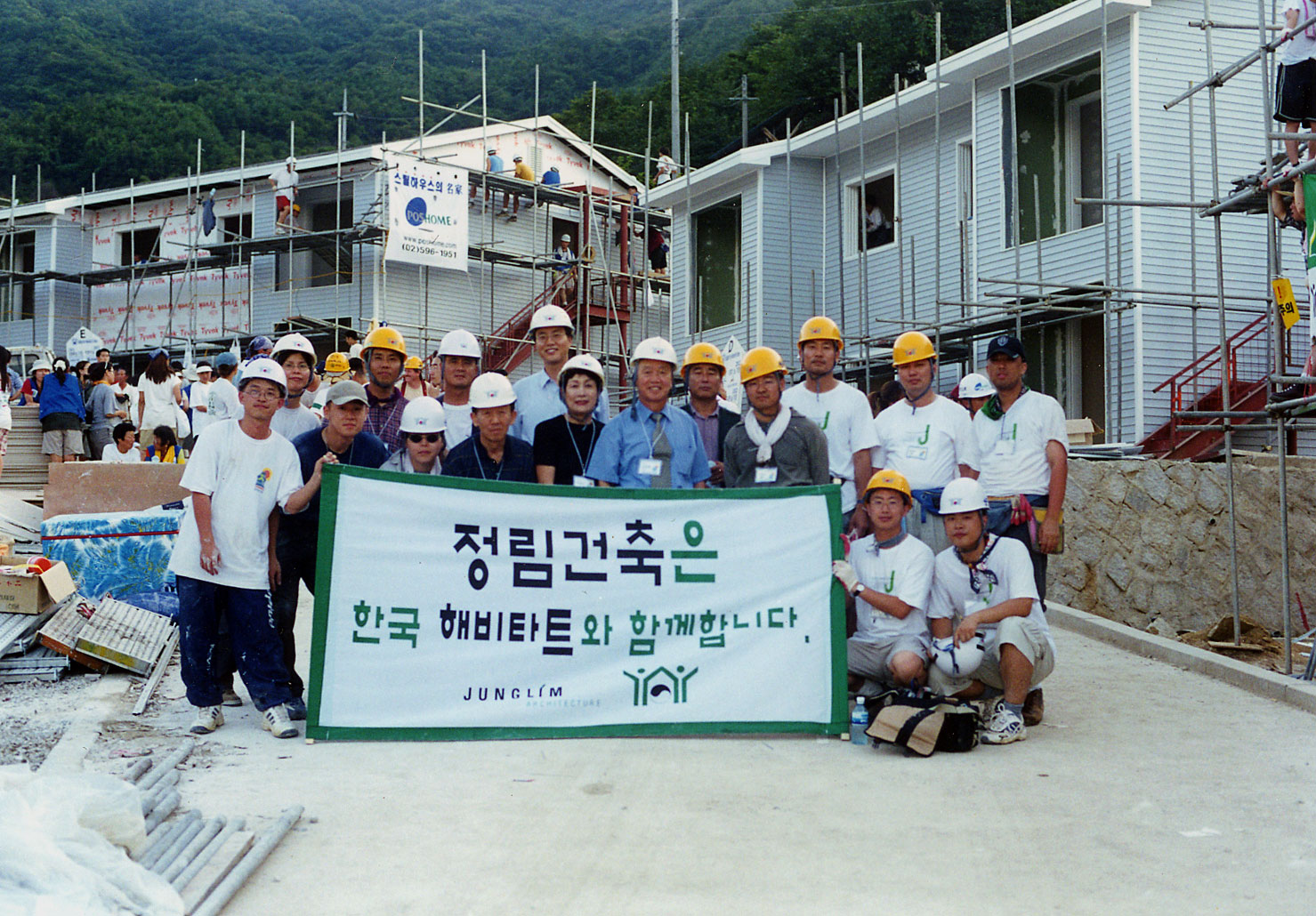
December 2000: Publishing the yearbook of Junglim Architecture
Junglim Architecture compiled its projects from one year and published its first yearbook, Junglim Architecture Works 2002. Through the annual publication summarizing the year’s work process and achievements, Junglim led design culture and publicly shared the firm’s new vision and diverse works with both internal and external audiences. The yearbook was published from 2002 to 2017.
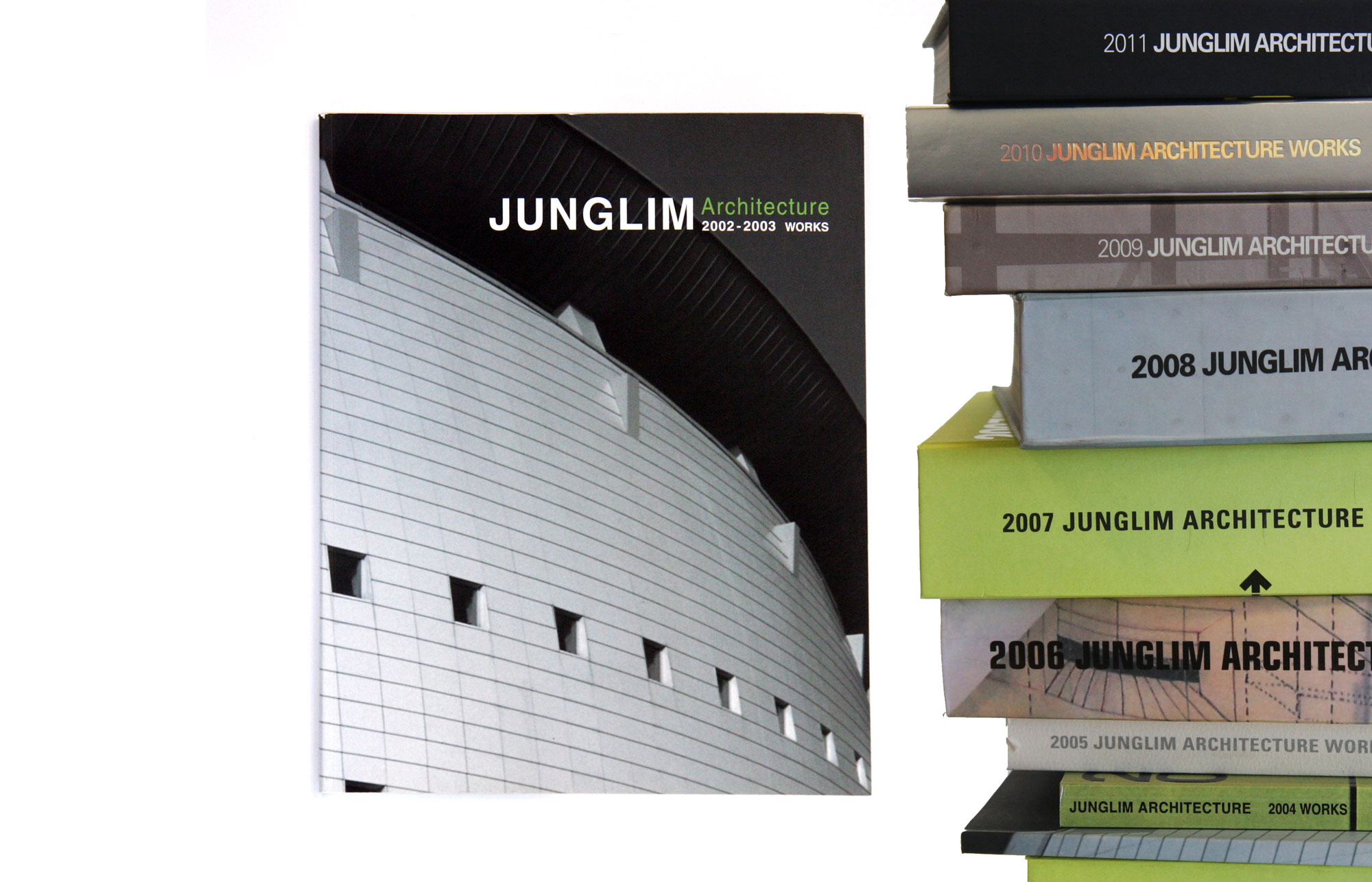
2004: Completing Yonsei University Severance New Hospital
Yonsei University Severance New Hospital is a large-scale building with 1,000 beds, unprecedented in scale at the time and the first hospital in Korea to apply a “medical ubiquitous” environment. Junglim Architecture collaborated with the American firm Ellerbe Becket to create a new model of medical design, implementing a flexible curved facade that symbolizes the new hospital. The curved facade remains a landmark in Seodaemun-gu even more than 20 years after completion.

March 2005: Holding the 1st Junglim Student Architecture Award
The Junglim Student Architecture Award began in 2005 under the main theme, “Globalizing Tradition of Korean Architecture.” Junglim Architecture conducted five rounds of the award until 2009, then took a short hiatus. Since 2012, the Junglim Foundation renewed the award and has continued it annually.
2009: Completing Times Square
Yeongdeungpo Times Square, a representative example of urban regeneration projects in Korea, is a renewal of an existing department store into a large-scale complex that maximizes the site’s value and promotes re-centralization of the city’s periphery. Junglim Architecture led the architectural design from the initial stages through market research, case studies, master planning, and design to completion. Times Square, the foundation of Junglim Architecture’s commercial complex projects, proposed a new model of public space in twenty-first-century Korea based on the concept of “shopping as a lifestyle.”
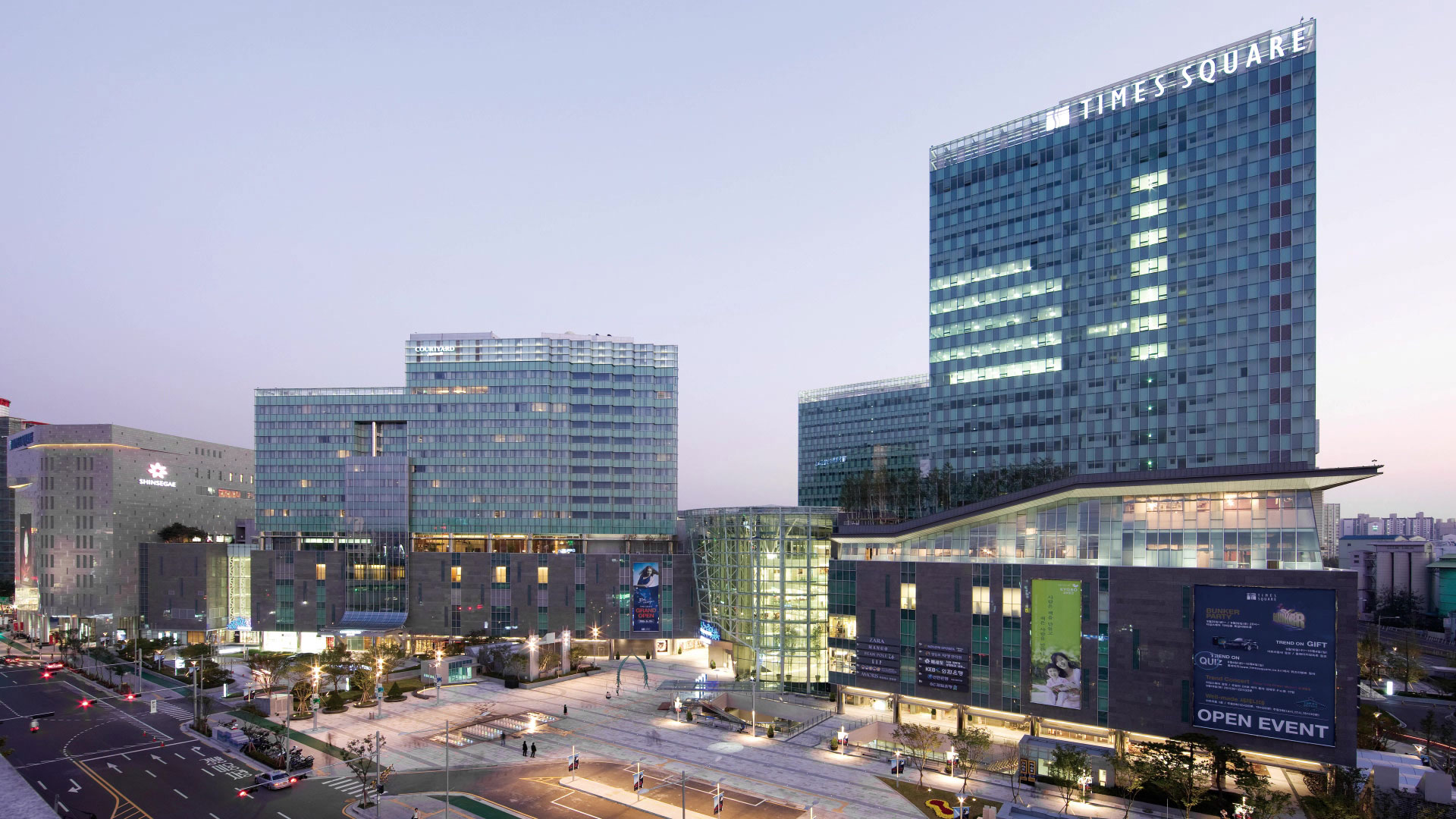
April 2009: Newly establishing the CM Division
June 2009: Establishing a local corporation in Shenyang, China
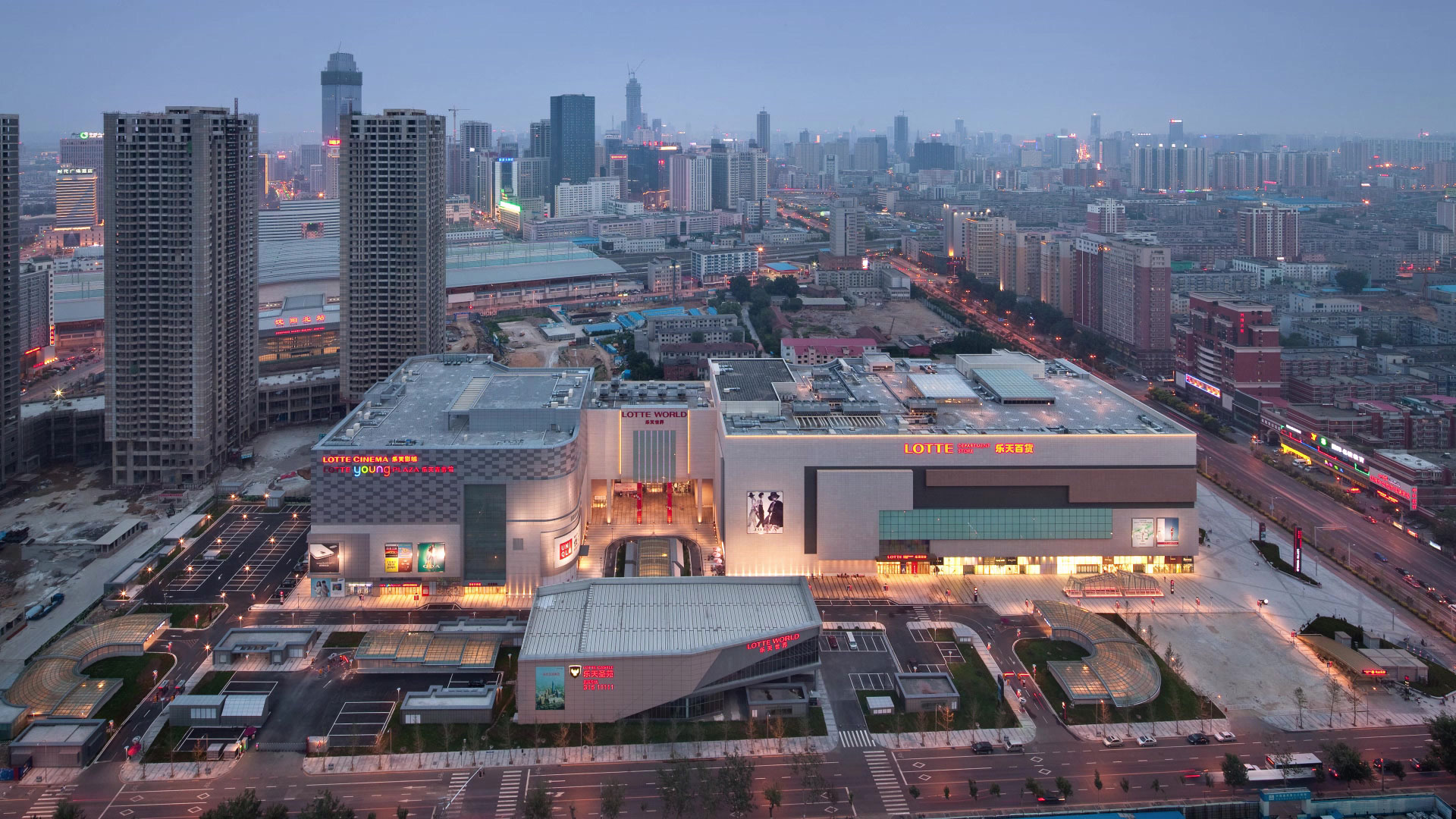
June 2009: Declaring the firm’s mission, vision, and core values
On the occasion of its 42nd anniversary, Junglim Architecture established a mission to “create healthy spatial environments, supporting a world of living together.” The vision was set as “a happy workplace, a healthy architectural culture group, and a desirable company.” To realize this, the core values were selected as Human, Trust, Teamwork, Excellence, Leadership, Openness, and Sustainability.
2010s
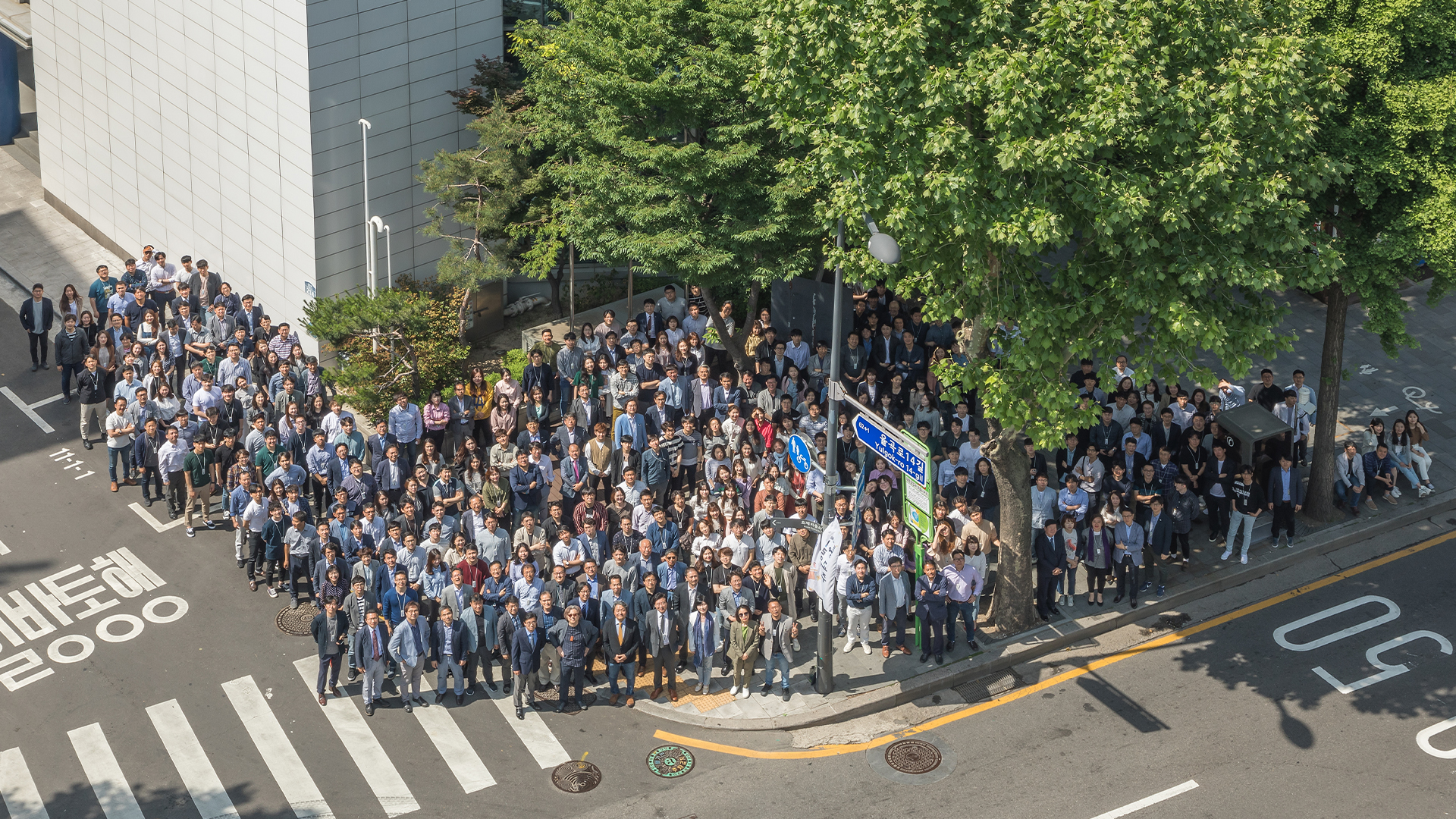
September 2010: Publishing Junglim Architectural Catalog
Junglim Architectural Catalog was published at a time when there was no integrated catalog providing accurate information on domestic building materials and construction methods. The book is based on accumulated data about the building materials used in design practice at Junglim Architecture. As another outcome of the firm’s unique “copyleft” spirit, the catalog contributed to the standardization and advancement of domestic architectural technology, materials, and construction methods.
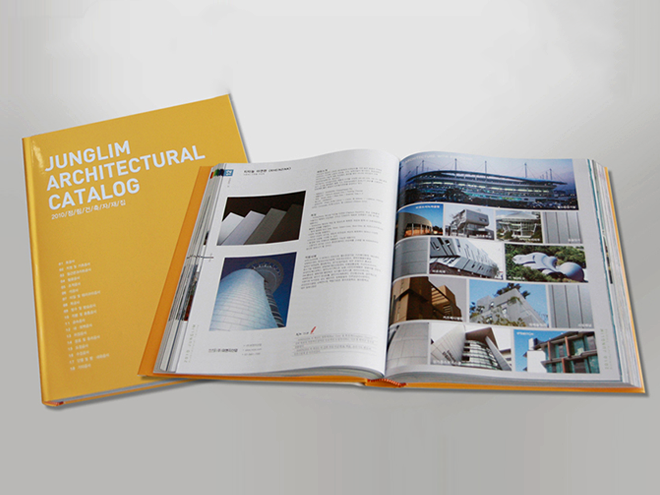
2011: Integrating the CM Supervision Division
April 2011: Establishing Junglim Foundation
The Junglim Foundation was established to create a healthy ecosystem for Korean architecture. With the purpose of enhancing architecture’s social role and revitalizing communities through architecture, the foundation actively engages not only with the architectural field but also with the broader cultural and arts communities. To serve as a balanced mediator of Korean architectural culture, it conducts various programs including media, publishing, research, education, forums, and exhibitions.
The official website of Junglim Foundation
July 2011: Establishing a local corporation in Ho Chi Minh City, Vietnam
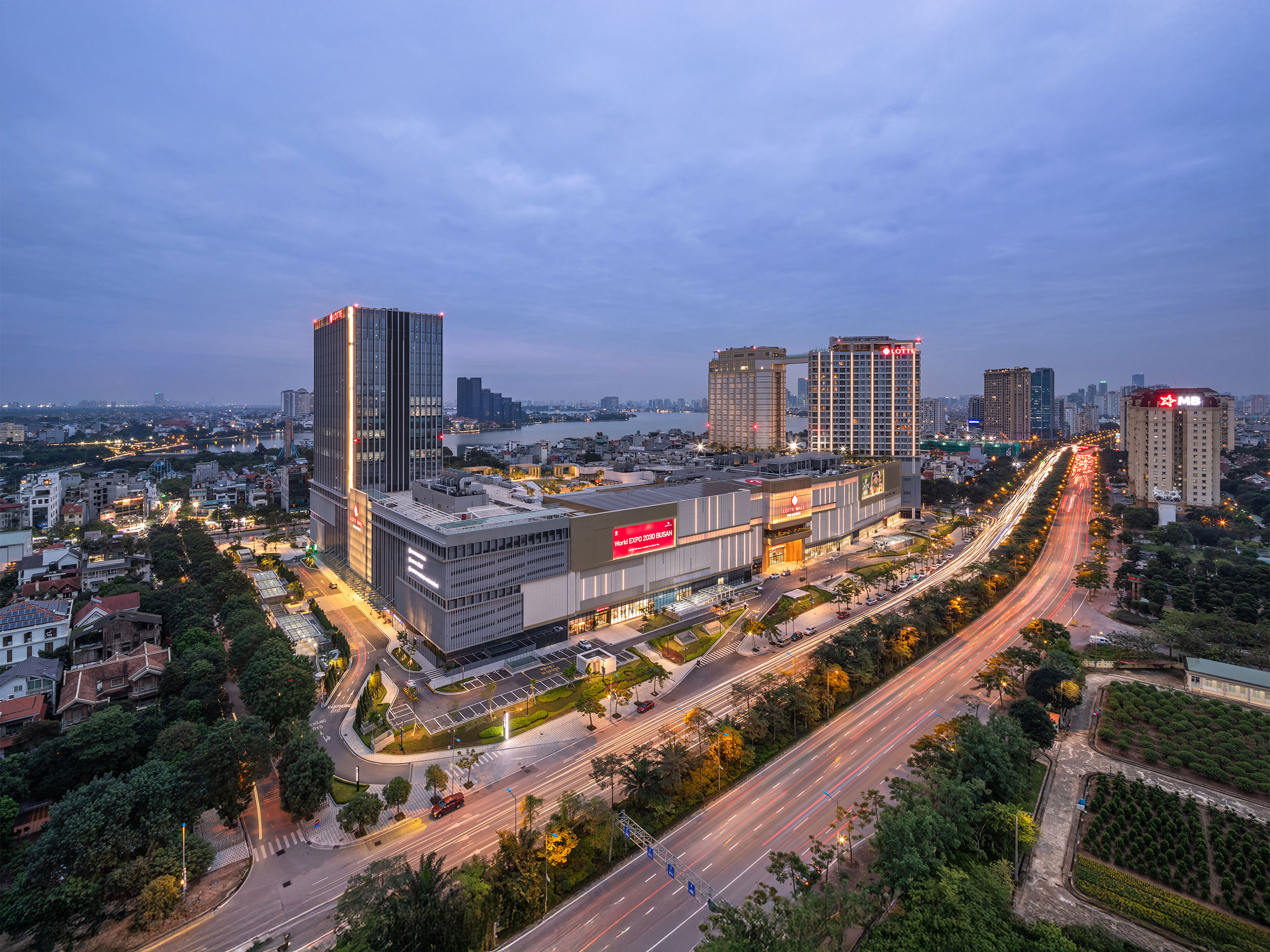
February 2015: Implementing Junglim Architecture Leadership Program
Having played a leading role in the industry based on a healthy philosophy and values, Junglim Architecture began contemplating sustainable growth within an increasingly diversified and specialized social structure. The five-stage leadership program planned from this reflection aims for individual members to cultivate a healthy philosophy, achieve teamwork based on diversity among members, and ultimately grow into capable leaders in the future.
September 2016: Completing Starfield Hanam
Starfield Hanam, developed through the joint investment of Korea’s Shinsegae and the U.S. shopping specialist company Taubman, is a large-scale shopping mall inspired by the natural landscape of the surrounding region. Noted as the largest shopping mall in Korea based on a single building, Starfield presents an indoor urban space that proposes a new lifestyle. By reinterpreting elements such as the spaciousness associated with American shopping malls, the exotic views and leisure experiences of Southeast Asian hotels, and attractions like water parks, it introduces a new format of leisure culture as a stay-type mixed-use shopping mall.
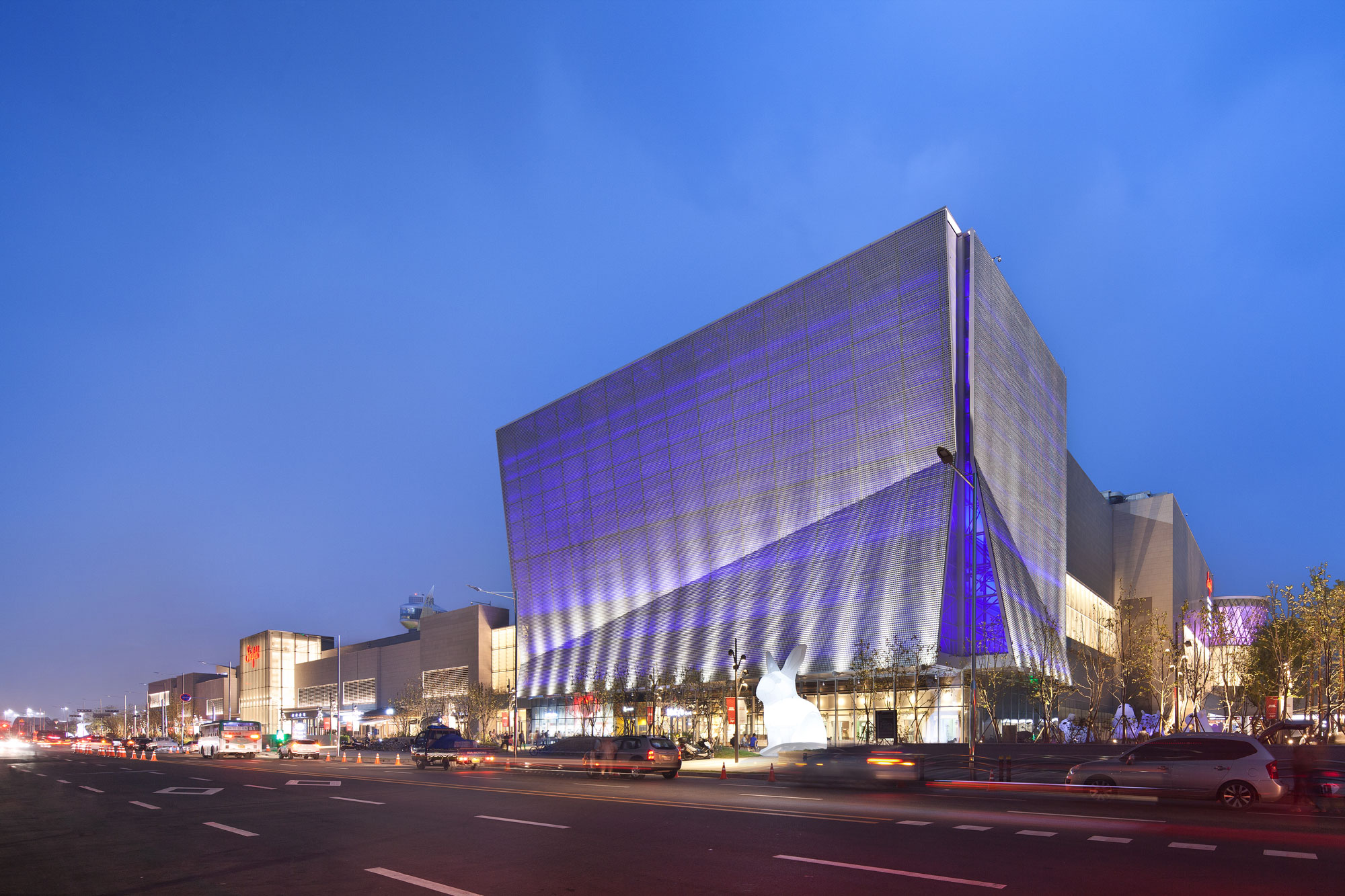
November 2016: Winning the International Design Competition for the Master Plan of the National Museum Complex in the Administrative City
The National Museum Complex, to be established in Sejong, will be the largest museum complex in Korea, bringing together a total of five museums and two integrated facilities. In the international design competition for the master plan, which drew participation from leading domestic and overseas architectural offices, the joint proposal “Sejong Museum Gardens” by Junglim Architecture and Canada’s Office OU was selected as the winner.
The winning design reorganized the entire complex into a clear grid system and differentiated the density of the interfaces between the complex, the city, and nature. This spatial modulation, which enhances the relationship with nature through balanced variation, received high acclaim. With this selection, Junglim Architecture and Office OU were awarded the basic design rights for the National Children’s Museum, the Integrated Storage, and the Integrated Operations Center.
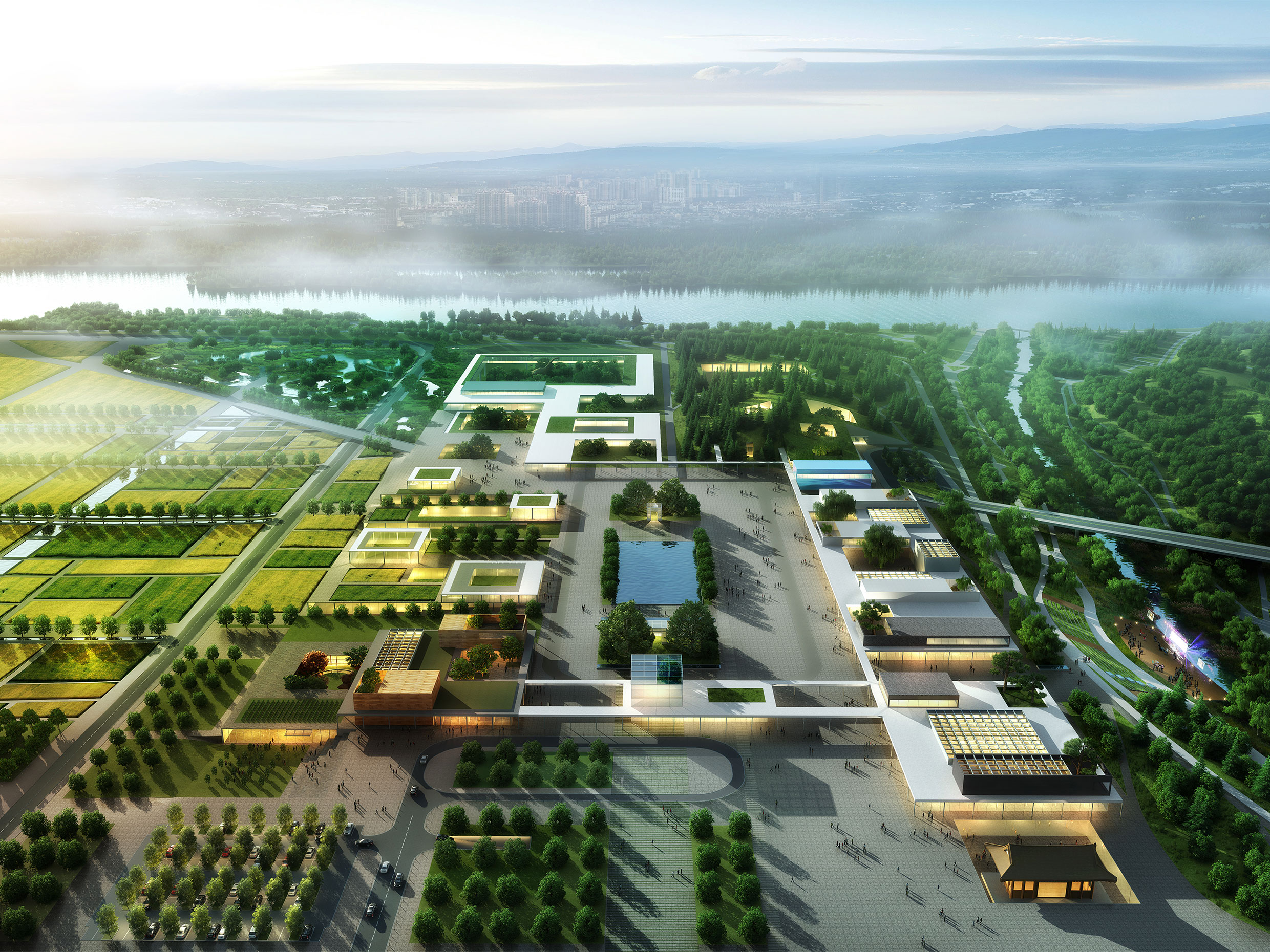
December 2016: Producing & Distributing the BIM Guidebook
Junglim Architecture and Autodesk collaborated through an MOU to produce the BIM Guidebook. Junglim Architecture contributed its accumulated practical BIM expertise, while Autodesk provided technical support and a platform accessible to a wide audience.
Download the BIM Guidebook
June 2017: Junglim Architecture’s 50th Anniversary
Marking its 50th anniversary, Junglim Architecture created the slogan “50 Years Righteously! 100 Years Together!”, pledging to become a centennial enterprise based on righteous values, mission, and justice without resting on past achievements. To commemorate the 50th anniversary, the firm published a special issue of the monthly magazine SPACE under the theme “Ordinary Senses” and exhibited 50 representative works selected by employee votes from the past 50 years of projects at the UIA World Architecture Congress (September 2017).
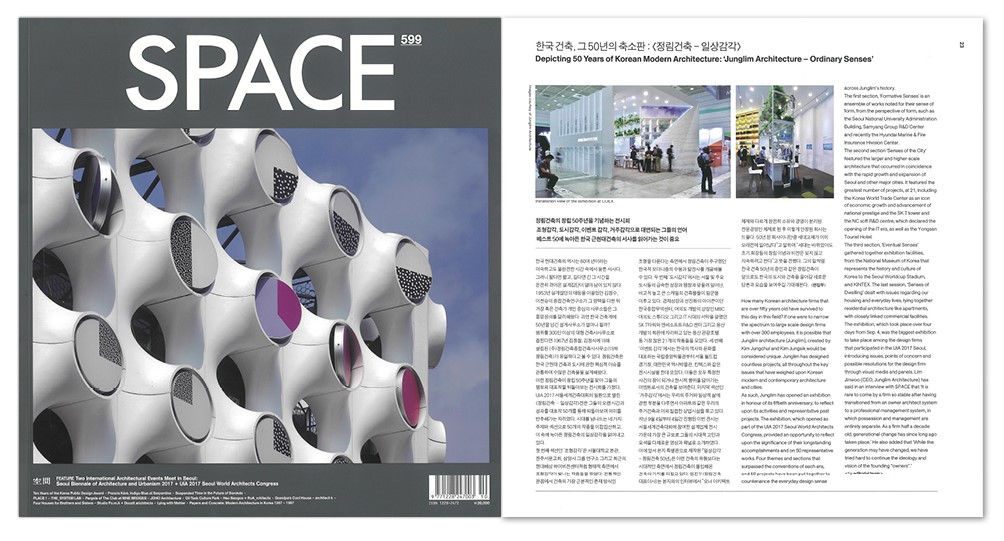
December 2017: Publishing Kim Jungchul and Junglim Architecture 1967-1987
Kim Jungchul and Junglim Architecture 1967-1987 is a book that sheds light on the life and architectural works of Kim Jungchul, the founder of Junglim Architecture, Korea’s largest design collective, emphasizing design by organization and collaborative teamwork rather than individual artistry. This book serves as a minimal archive of architect Kim Jungchul’s early works, broadening perspectives on Korean architecture by exploring the works of Kim Jungchul who practiced “total design by organizational collaboration” and of the comprehensive design firm Junglim Architecture, thus marking the beginning of a historiographical reassessment of architect Kim Jungchul.
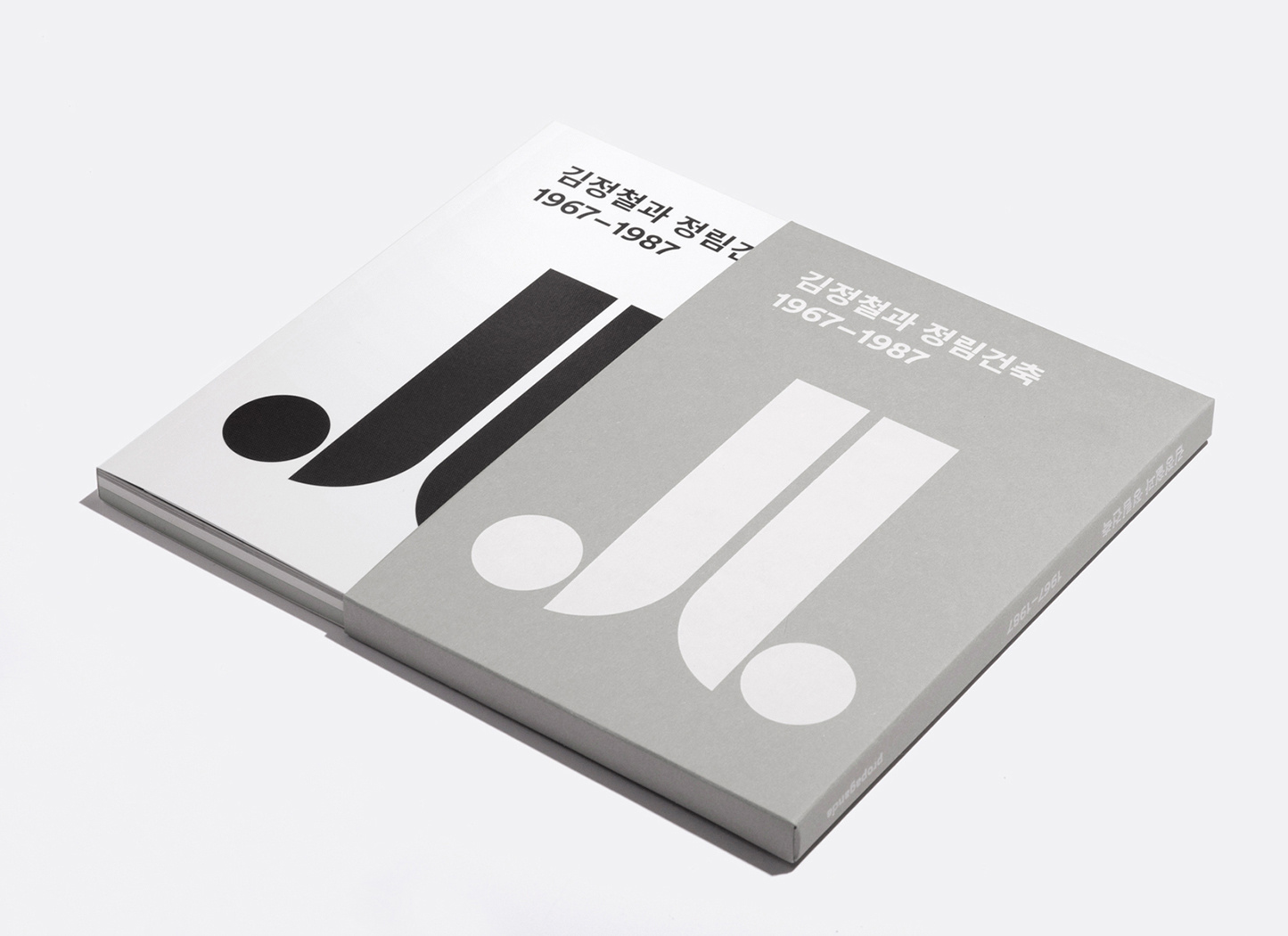
Kim Jungchul and Junglim Architecture 1967-19871967-1987
Publication Date: December 28, 2017
Author: Park Junghyun
Editor: Junglim Foundation
Publisher: Propaganda
ISBN 978-89-98143-52-7 (03610)
The majority of office and residential spaces that make up our cities are not the work of individual architects. While comprehensive design firms designing large-scale buildings play an absolute role, historical and critical research on their achievements has not been actively conducted. Designed collaboratively with multiple stakeholders or by teams within design organizations rather than by individuals alone, their works have often been excluded from architectural evaluation. Large office buildings, shopping centers, apartments, hospitals, and churches constitute our urban environment, yet serious discourse about their design methods and processes has rarely taken place. […] The reason for limiting the study to the first 20 years of Junglim Architecture’s 50-year history is because this period most clearly reveals the traces and concerns of architect Kim Jungchul. Moreover, it was necessary to first organize the older historical materials before his contemporaries’ memories fade and documents disappear. The task remains to further examine the works of Kim Jungchul and the comprehensive design firm Junglim Architecture in order to foster the diversity and healthy architectural culture in Korea that he envisioned.”
(Excerpted from the Preface “A Pioneer of Organizational Design”)
March 2019: Relocated to the Haenam 2 building, Sejongdae-ro, Jung-gu
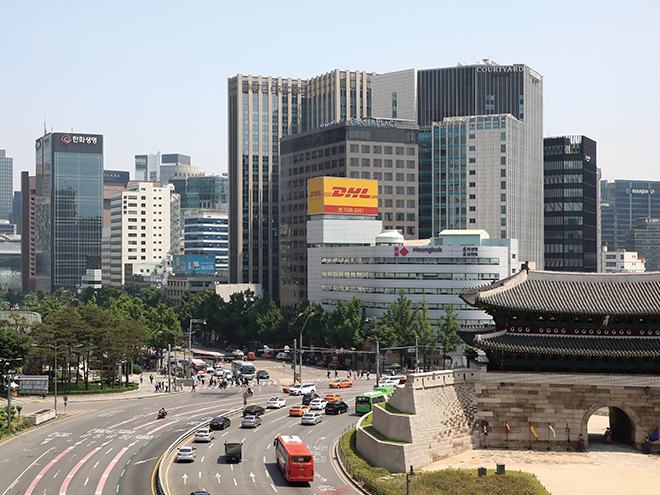
2020s
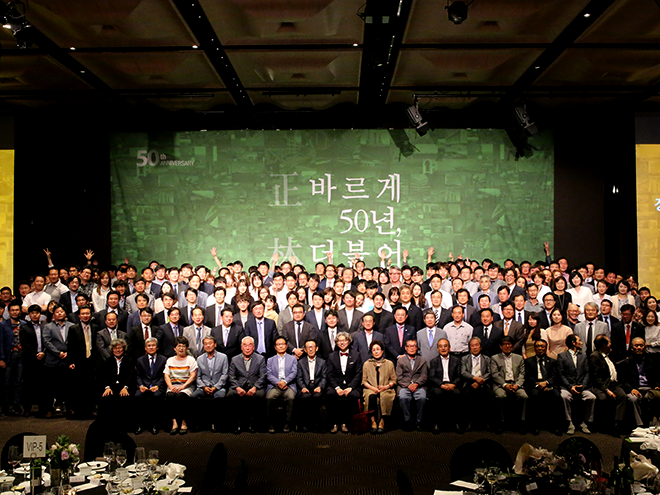
September 2020: Releasing Junglim People & Works Digital Archive
The Junglim People & Works Digital Archive is an expanded version of the 2017 publication Kim Jungchul and Junglim Architecture 1967-1987. It collects and selectively publishes the firm’s project materials spanning the 1960s to the 1990s through a dedicated website. The archive includes not only selected project materials but also researchers’ writings and annotations, as well as interviews with various architects who have worked at Junglim Architecture over the years. The People & Works Digital Archive aims to weave together the firm’s works accumulated and the people involved for over 50 years, to interpret Junglim Architecture within the flow of modern Korean architectural history.
Junglim People & Works Website
May 2022: Developing and Distributing Free the Kim Jungchul Typeface
To commemorate the 10th anniversary of the late Honorary Chairman Kim Jungchul (1932-2010), “An Architect’s Typeface Design Competition” was held to inherit and develop the philosophy and legacy he left to future generations. Based on the grand prize-winner from the competition, the “Kim Jungchul Typeface” was developed as two types: Myeongjo (serif) and Gothic (sans-serif). Junglim Architecture distributed the typeface free for all users to use. Additionally, efforts to expand usability across the architecture industry continue, such as signing business agreements with the Korea Institute of Registered Architects and the Korean Institute of Architects for the use of the Kim Jungchul Typeface.
Use the Kim Jungchul Typeface
2022: Implementing Ethical Management
October 2022: Completing Thinking Platform Dangsan
Thinking Platform Dangsan, the second knowledge industry center launched by SK D&D’s office brand “Thinking Platform,” is a mega-scale office facility built in Yeongdeungpo, one of Seoul’s three major business districts. Unlike traditional knowledge industry centers focused on suppliers, this center architecturally embodies a new paradigm centered on actual users. While traditional knowledge industry centers usually prioritize efficiency and cost-effectiveness, Thinking Platform Dangsan was endued grace to create an environment where tenant companies take pride and want to stay longer — features minimally implemented in existing centers. Notably, the development includes “streets” and “plazas” forming open grounds that connect the mega-scale urban space with the city. Previously used as a logistics warehouse site, this connection reestablishes links to the surrounding urban fabric that had been severed.
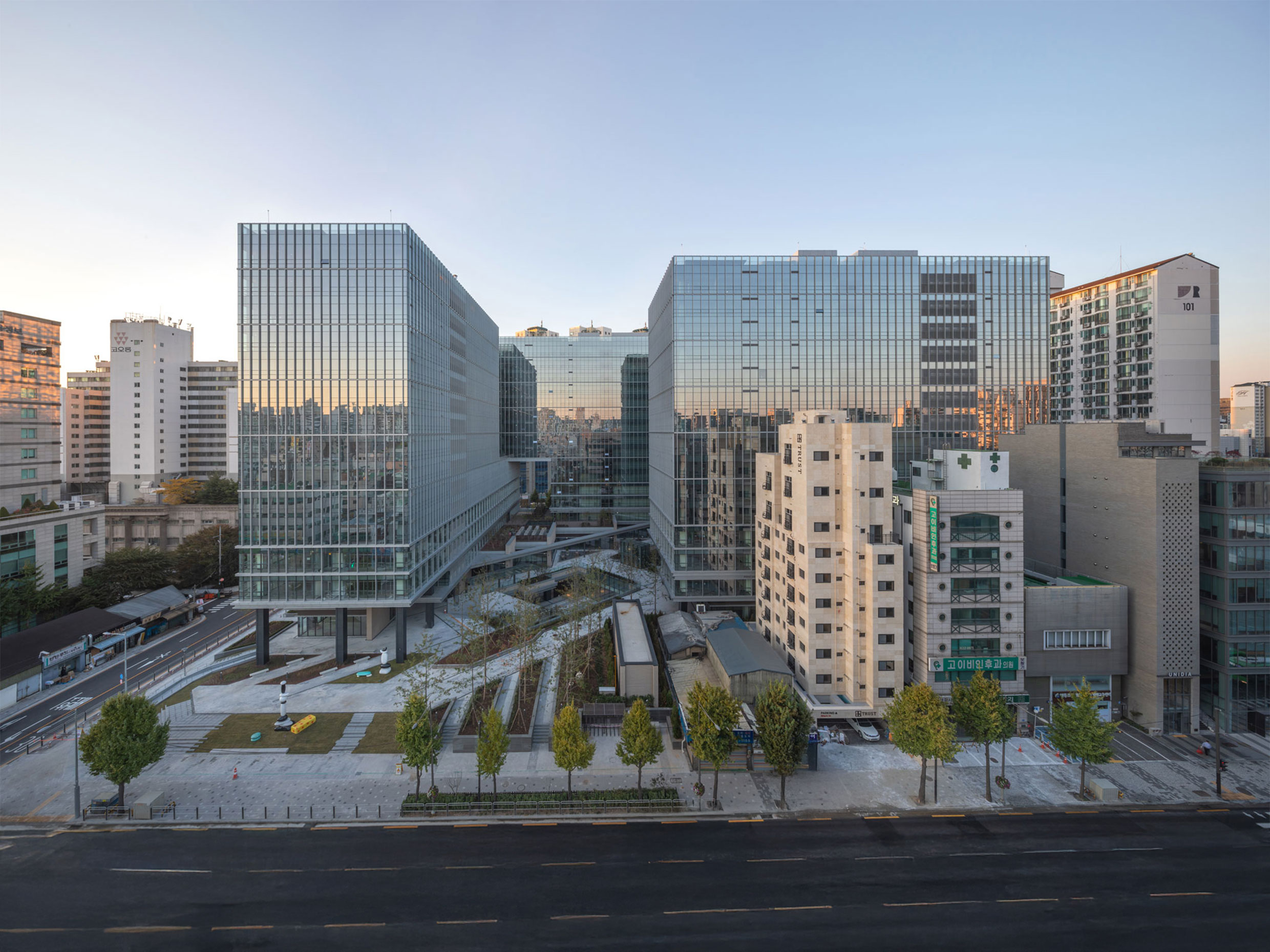
2023: Completing Lotte Mall West Lake Hanoi, Vietnam
Lotte Mall West Lake Hanoi, the largest commercial facility in Hanoi, Vietnam, is a landmark complex providing a new experiential space in a country with almost no stay-type shopping malls. The project was carried out based on Junglim Architecture’s schematic design in collaboration with Benoy.
Lotte Mall West Lake Hanoi is differentiated from other shopping malls in Hanoi, as a complex combining a shopping mall, hotel, residency, and office spaces. Hanoi’s hot climate, high humidity, and air pollution that render interior activities more important were taken into account to plan the mall as a “one-day trip” destination within the city. Unlike typical shopping malls, Lotte Mall West Lake balances the ratio of attraction and retail contents, aiming to be a place where people want to stay rather than just shop. To compensate for the local shortage of indoor cultural spaces, various mixed cultural spaces were created. The mall’s facade reinterpreting Vietnam’s urban landscape is praised for reflecting the surrounding context and establishing a landmark identity.
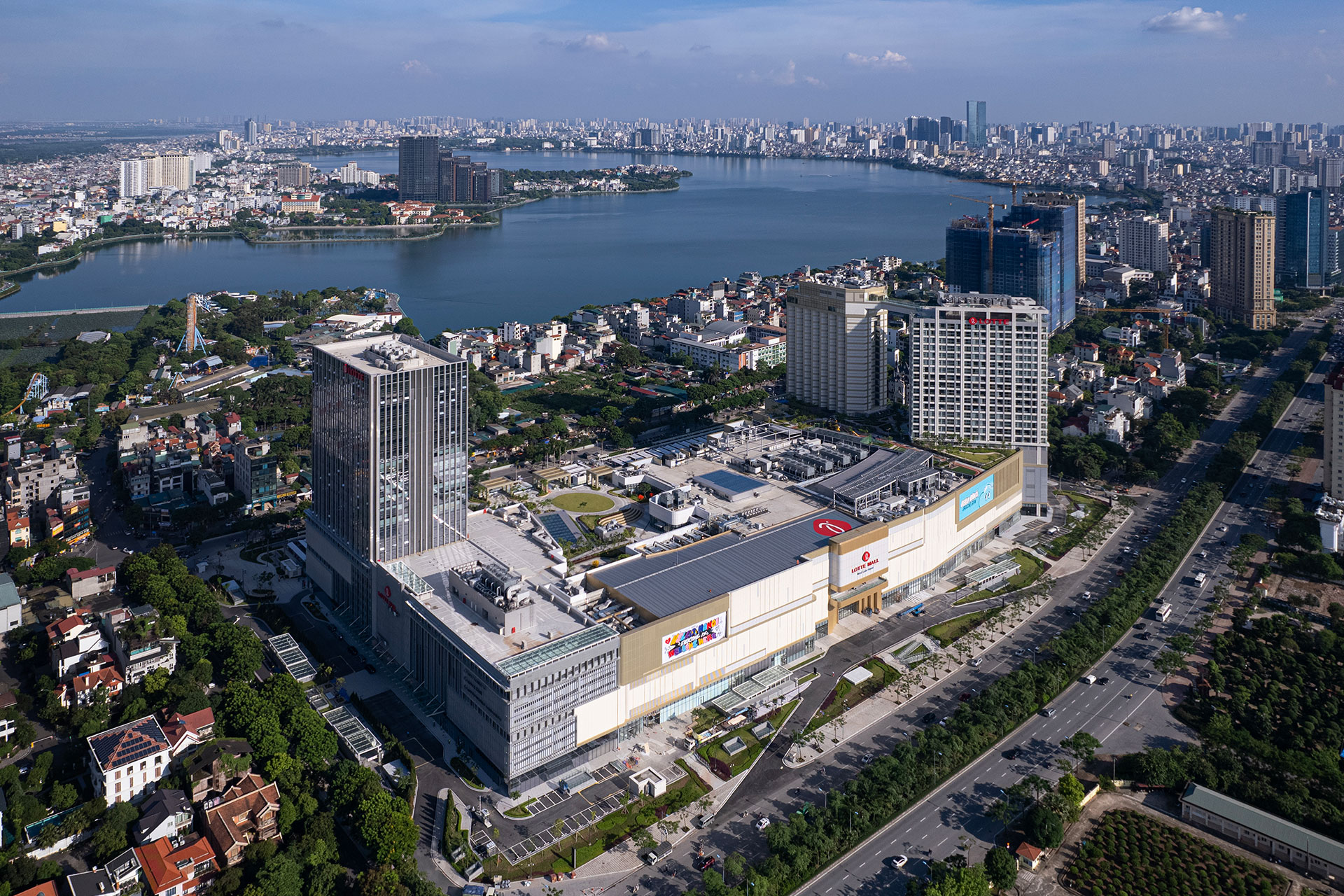
2023: Completing Busan North Port Marina
As part of the first phase of the Busan North Port redevelopment project, Busan North Port Marina is a yacht-exclusive harbor enabling yachting activities and services — an uncommon facility in South Korea. The marina in the flat marine park harmonizes with the surroundings by respecting existing structures such as the Opera House and the Busan Port International Passenger Terminal while forming a multi-level landscape that serves as a new landmark of Busan. The design maximizes the long coastal quay where sea meets land, enhancing connectivity with marine mooring facilities and increasing the proportion of convenient amenities for user accessibility. Additionally, a survival swimming training center and a skin scuba pool were introduced to serve as a community sports facility that aims to vitalize the marina.
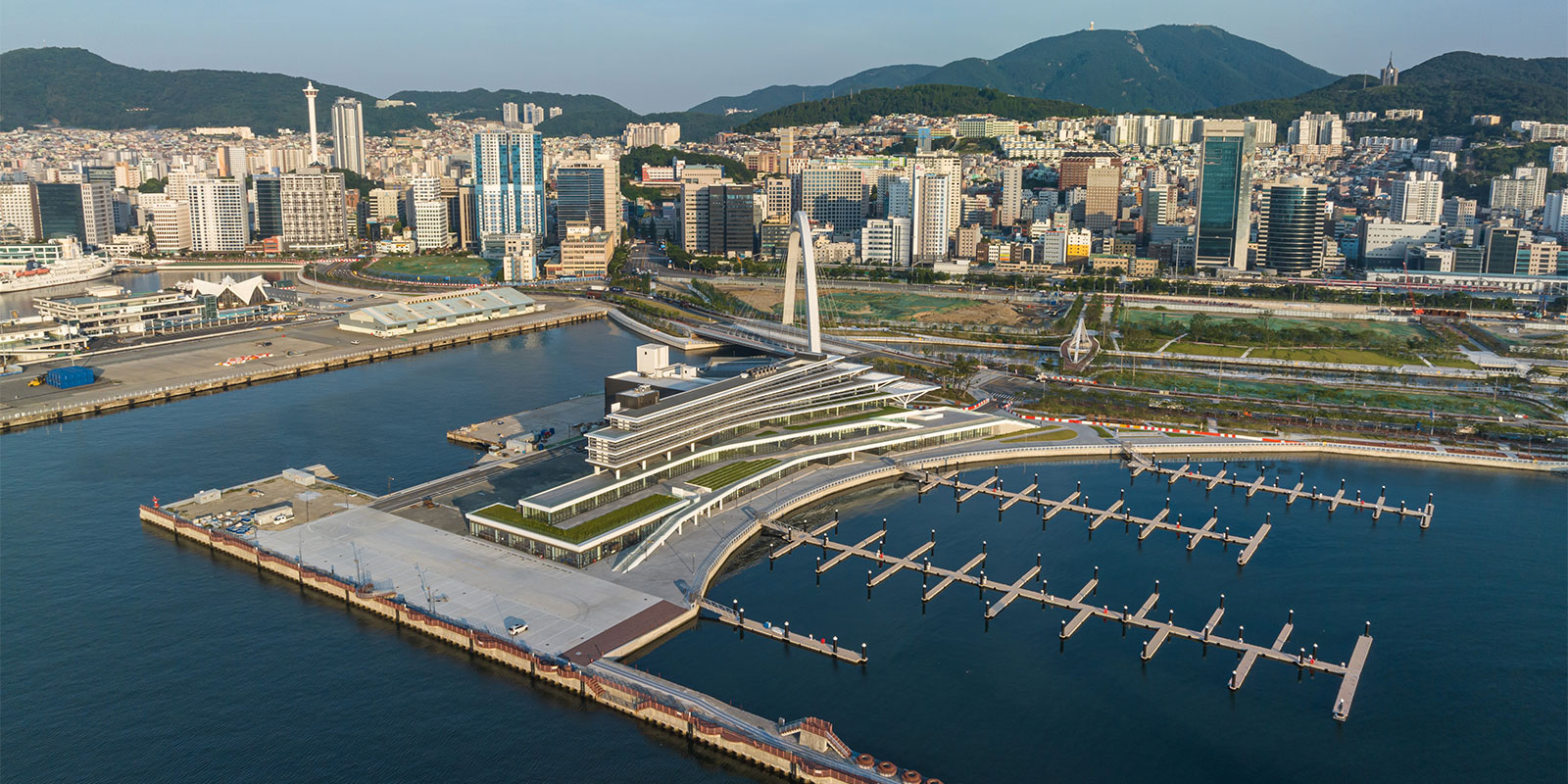
January 2023: Establishing Junglim CM through Corporate Division
As the construction management (CM) market continues rapid growth, Junglim Architecture separated its CM sector to establish the new entity “Junglim CM.” In February 2024, Junglim CM expanded and relocated its headquarters to the office building of Yeongdeungpo Times Square.
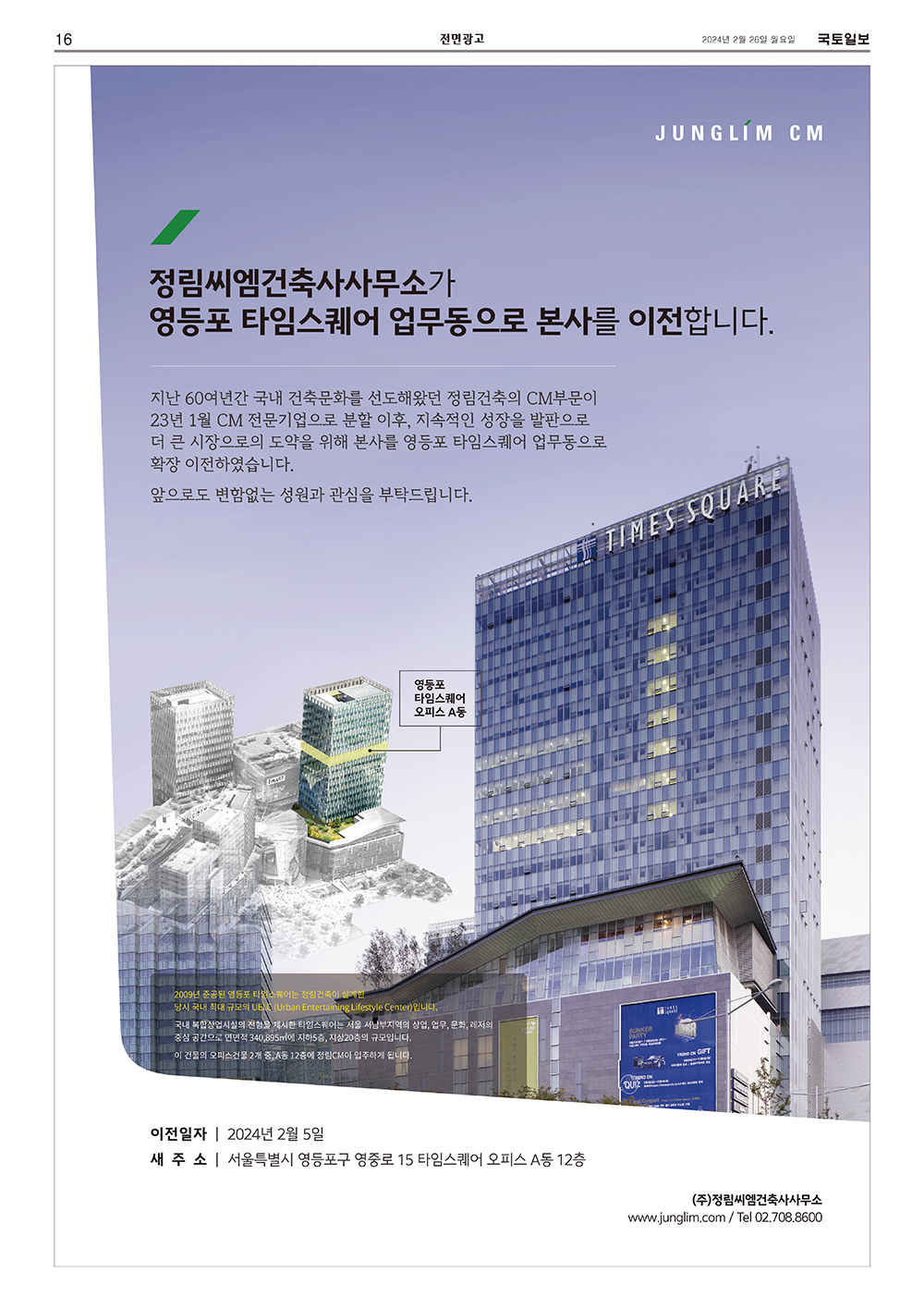
August 2023: Completing Naver Data Center Gak Sejong
Naver Data Center Gak Sejong is a new type of hyperscale data center that adds the values of coexistence among humans, environment, and technology to the standard data center that typically focuses on functionality. Junglim Architecture formed a consortium with HDR and ONE O ONE Architects and won the final selection in the 2020 international design competition for Naver Data Center Gak Sejong. Junglim Architecture has since served as the main architect, designing the master plan, server building, and operations building, collaborating with multiple firms including Mass Studies, Seoan Landscape Architecture, and Front.
From the master plan to material selection, Gak Sejong was designed with extensive research to reduce its carbon footprint and avoid excessive design elements that could hinder local biodiversity preservation. Recognized for these efforts, Gak Sejong received the Grand Prize in the 18th Korea Ecological Environment Architecture Awards (Technical Category) in 2023 and the Minister of Trade, Industry and Energy Award at the 2024 Korea Green Building Awards.
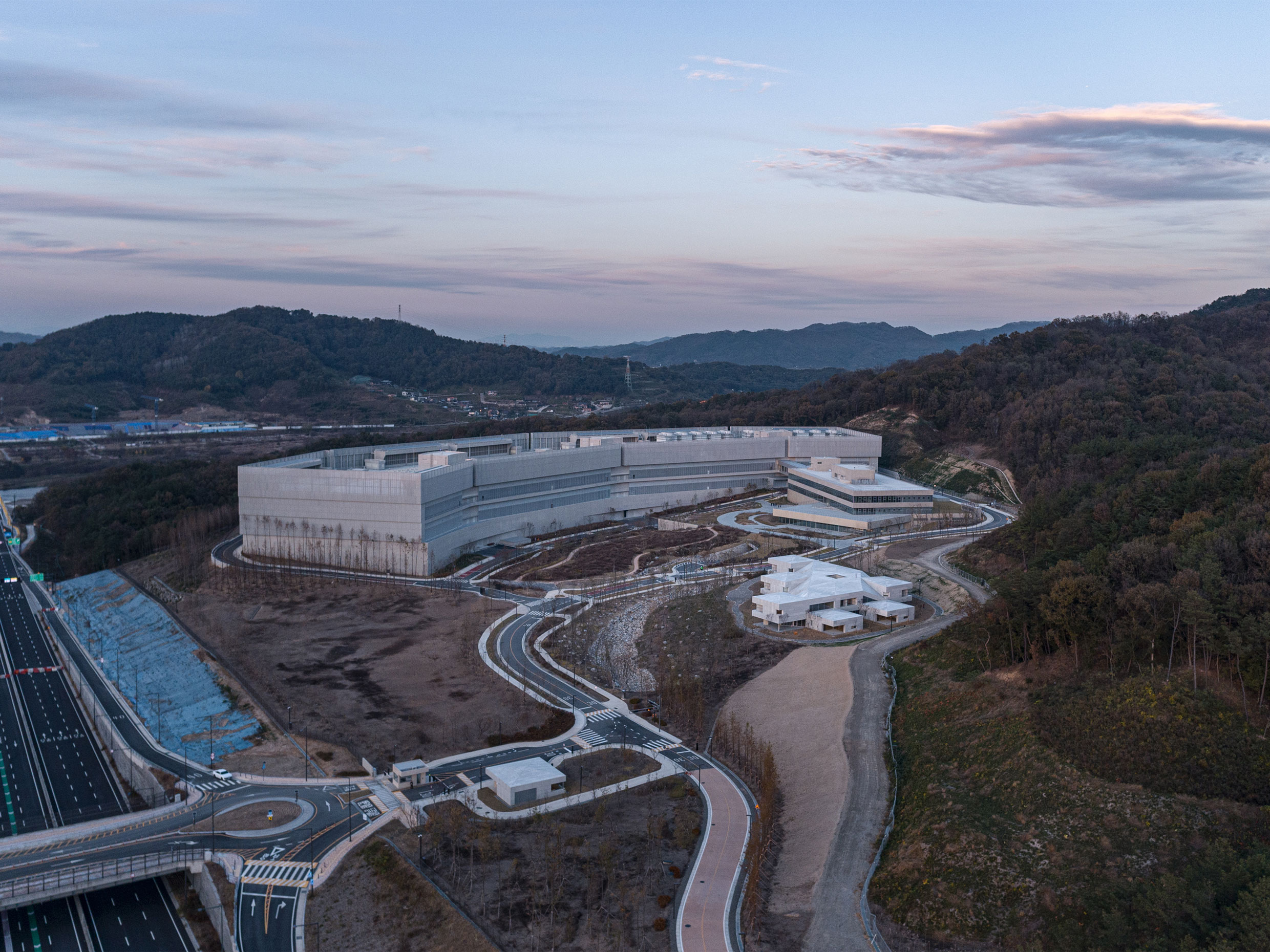
January 2024: Establishing the Advanced Design Sector, Implementing BU System
To respond professionally to the rapidly changing and segmented market demands, an organizational restructuring was undertaken. The previous structure of four groups (Design Groups 1 to 4) was reorganized into two sectors (Design Sector and Advanced Design Sector) and further restructured into 18 Business Units (BUs). The Advanced Design Sector was newly established to specialize in facilities based on advanced and future strategic industries such as smart factories, semiconductors, secondary batteries, and data centers, as well as smart offices and bio-healthcare-related facilities, securing expertise to target a broader market. The 18 newly established BUs under the Design and Advanced Design Sectors professionally handle specialized design fields. Leaders heading each BU were granted independent decision-making authority to enable rapid and efficient market response.
